
#Republic: Divided Democracy in the Age of Social Media
by
Cass R. Sunstein
Published 7 Mar 2017
Group polarization also raises more general issues about communications policy. Consider the “fairness doctrine,” now largely abandoned, but once requiring radio and television broadcasters to devote time to public issues and allow an opportunity for opposing views to speak. The latter prong of the doctrine was designed to ensure that listeners would not be exposed to any single view. If one view was covered, the opposing position would have to be allowed a right of access. When the Federal Communications Commission abandoned the fairness doctrine, it did so on the ground that much of the time, this second prong led broadcasters to avoid controversial issues entirely and to present views in a way that suggested a bland uniformity.
…
When the Federal Communications Commission abandoned the fairness doctrine, it did so on the ground that much of the time, this second prong led broadcasters to avoid controversial issues entirely and to present views in a way that suggested a bland uniformity. Subsequent research has indicated that the commission was right. The elimination of the fairness doctrine has indeed produced a flowering of controversial substantive programming, sometimes involving extreme views of one kind or another; consider talk radio.36 Typically this is regarded as a story of wonderfully successful deregulation, and in general that is correct. The effects of eliminating the fairness doctrine were precisely what was sought and intended. Those effects are indeed good, and they should be celebrated. But if we attend to the problem of group polarization, the evaluation is a bit more complicated.
…
A hope, vindicated by similar approaches in environmental law, is that a disclosure requirement will by itself trigger improved performance by creating a kind of competition to do more and better, and enlisting various social pressures in the direction of improved performance. I have referred several times to the old fairness doctrine, which required broadcasters to cover public issues and allow a right of reply for dissenting views. We have seen that this doctrine was repealed largely on the ground that it chilled coverage of public issues in the first instance. We have also seen that while the repeal was amply justified, it has had a downside insofar as it has increased fragmentation and hence polarization. But whether or not we think the old fairness doctrine was defensible, a disclosure requirement—tied to coverage of public issues and diversity of views—would be a far less intrusive way of accomplishing the most appealing goals of that doctrine.

The Rise and Fall of the Neoliberal Order: America and the World in the Free Market Era
by
Gary Gerstle
Published 14 Oct 2022
Limbaugh’s talk radio show went into national syndication only months after the Fairness Doctrine’s repeal. His defiantly unbalanced political commentary and his delight in provoking outrage among his liberal critics made his show one of the most popular, colorful, and influential on radio across the 1990s and 2000s. It became a pillar of the Reagan counter-establishment. Limbaugh himself always believed that the repeal of the Fairness Doctrine had made his rise and influence possible. He cleverly labeled efforts across the next two decades to restore the Fairness Doctrine as the “Hush Rush” movement. When the rare caller challenged him on his biases, Limbaugh defended his approach to politics in free market terms.
…
Zelizer, “How Washington Helped Create the Contemporary Media: Ending the Fairness Doctrine in 1987,” in Bruce J. Schulman and Julian E. Zelizer, eds., Media Nation: The Political History of News in Modern America (Philadelphia: University of Pennsylvania Press, 2017), 176-189; Anna Cardoso, “The Rise of the Right-Wing Media and the Repeal of the Fairness Doctrine in the USA” (undergraduate dissertation, University of Cambridge, 2019). 59.See, in particular, Walter Lippmann, Public Opinion (New York: Harcourt Brace, 1922) and The Phantom Public (New York: Harcourt Brace, 1925). 60.On the Fairness doctrine, see Zelizer, “How Washington Helped Create the Contemporary Media,” and Cardoso, “The Rise of the Right-Wing Media and the Repeal of the Fairness Doctrine in the USA.” 61.One of the key promoters of this vision was cyber-utopian (and longtime lyricist for the Grateful Dead) John Perry Barlow.
…
The Federal Communications Commission (FCC) established by the act made sure that no single media company became too powerful or too biased in its political views. Indeed, in 1949, the FCC adopted the “Fairness Doctrine” stipulating that a media company (radio or TV) that aired controversial views had to attempt to make “facilities available for the expression of contrasting viewpoints held by responsible elements with respect to the controversial issues presented.”42 If the company declined to do so, it would be subject to FCC sanctions and could even be taken off the air. Though never easy to enforce, the Fairness Doctrine compelled private media to strive for objectivity in their news reporting. It was grounded in a belief that public regulation of the broadcast media was essential to ensuring that America’s citizenry had the balanced information necessary to make informed political decisions.

The Cigarette: A Political History
by
Sarah Milov
Published 1 Oct 2019
Like many a lawyer before him, Banzhaf engaged in strategic venue shopping on behalf of his client. Only his client was the broad, unspecified notion of “the public.” In a 7-0 decision, the FCC ruled in Banzhaf’s favor. “We hold that the fairness doctrine is applicable to advertisements,” the Commission wrote. This was a dramatic ruling, one that vastly expanded the obligations of broadcast licensees, and multiplied the effects of the meager resources of public-health organizations. The FCC rejected the broadcasters’ assertion that the Fairness Doctrine applied only to programming. The Commission instead reiterated that the privilege of a broadcast license implied a reciprocal duty by the licensee of “the right of the public to be informed.”85 The nature of the content did not diminish the broadcaster’s duty to the public interest.
…
It was a flabby and aimless body that could be worked with and “prodded.”137 Indeed, in comparison to other legal activists of his generation, Banzhaf sounded downright conservative. In his view, public interest law should represent “a revolution within the system to avoid a revolution outside the system.”138 The substance of Banzhaf’s FCC petition was similarly restrained. For in the Fairness Doctrine, Banzhaf had found a glitch in a regulatory system philosophically wedded to the notion of consent and choice. The Fairness Doctrine ruling derived from the idea that citizens could make a more informed choice about smoking if they were exposed to both sides of the issue. Some categories of Americans—minors—could not consent to smoking. For this reason, anti-cigarette advertising was crucially important.139 Effective public-health advertising could serve to inoculate youth from the seductions of the tobacco advertisers.
…
In 1967, John Banzhaf, a twenty-seven-year-old associate at a Manhattan law firm, penned a petition to the Federal Communications Commission (FCC). In it, he requested that equal airtime be given to anti-tobacco messaging to counteract the voluminous airtime devoted to selling cigarettes. His argument was creative and bold: the Fairness Doctrine—an eighteen-year-old policy that required broadcasters to present equal airtime to views of public importance—meant that anti-smoking messages be given free airtime on public airwaves in order to match the time spent on cigarette advertising. Smoking, as the Surgeon General’s Report made clear, was a question of major public import.
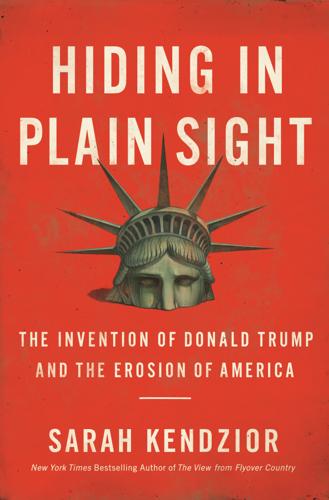
Hiding in Plain Sight: The Invention of Donald Trump and the Erosion of America
by
Sarah Kendzior
Published 6 Apr 2020
In 1987, the FCC repealed the Fairness Doctrine, a 1949 policy that had required broadcast networks to present controversial issues of public importance in a manner that was—in the FCC’s view—fair and balanced. Republicans successfully argued that the Fairness Doctrine was an attack on journalistic freedom, and both Reagan and Bush thwarted efforts by Congress to keep the doctrine intact. This repeal happened as 24-hour cable news arrived, and foreign behemoths, like Rupert Murdoch’s Fox, landed in the United States. Fox TV was formed in 1986, one year before the Fairness Doctrine was repealed, and Fox News launched a decade later in 1996.
…
According to New Yorker journalist Jane Mayer, Fox News founder Roger Ailes created the network to ensure Watergate-style accountability would not happen again to a president he supported.3 The Fairness Doctrine was repealed just as television news was being transformed in both pace and purpose. In many respects, the pace became the purpose; the truth, an afterthought. I have no memory of what it was like to watch TV news under the Fairness Doctrine, but it’s hard to fathom the widespread assumption of faith in network integrity required to make “fair and balanced” anything more than a bitter joke. Even when I envision a world in which its precepts are deployed, I imagine it being exploited in cynical “both sides” debates over hard facts, like the existence of climate change, or dehumanizing myths about ethnic groups.
…
Corporate raiders who would later aid the Trump administration—Carl Icahn, Wilbur Ross, Rupert Murdoch—commenced a national shakedown disguised as economic revival. Scams stretched from Atlantic City to Gary, Indiana, to St. Louis and beyond, to international waters where moguls parked their stolen assets.29 Critical regulations were tossed—the fairness doctrine that had protected media; the labor laws that had protected unions. While there were objections, few recognized the long-term agenda to profit off the damage. Trump arrived on the national scene right as the nation began to crumble. * * * In 2016, shortly after Trump was deemed president of the United States, the German publication Bild published a series of documents showing that Trump had not paid federal taxes since 1977—an allegation that echoed a vague claim Hillary Clinton had made during a debate but never fully explained.30 The files came from the Czech security services—essentially, the Stasi of the Czechoslovak Socialist Republic (CSSR), which had been monitoring Donald Trump and his Czech wife, Ivana, since they married in 1977.

Superbloom: How Technologies of Connection Tear Us Apart
by
Nicholas Carr
Published 28 Jan 2025
The National Association of Broadcasters launched what one observer termed an “all-out fight” against the FCC.39 In response, the commission convened hearings on the issue in 1948, gathering the testimony of dozens of representatives from the broadcasting industry, the public, and various civic groups. The discussions led the FCC to establish what came to be known as the fairness doctrine. Under the new rule, stations were required to devote airtime to discussions of issues of interest to the local community, and while they could present their own opinions, they also had to allot time for other views. “It is this right of the public to be informed,” the commission stressed, that forms “the foundation stone of the American system of broadcasting.”40 The fairness doctrine turned into another political battlefield. It was revisited and revised frequently over the years, and each update ignited new legal and political disputes.
…
Weekly newsmagazines provided more perspective and context, filtering out lesser stories and adding reportorial depth to more salient ones. Monthlies, or “slicks,” added still more color and personality, with immaculately reproduced photographs and long, thematic “think pieces” that tied events and ideas together. Broadcasters built up their own news organizations, a legacy of the fairness doctrine’s requirement that they cover “public issues.” On television, half-hour news programs, aired around dinner time, provided fast-paced, visual summaries of the day’s events. Talk shows such as 60 Minutes and Meet the Press offered longer reports on topics and controversies of the moment, often including interviews with public figures.
…
The Carter administration followed by deregulating radio, with the FCC declaring that the public interest would best be served by eliminating “unnecessarily burdensome regulations.”8 With Ronald Reagan’s landslide election in 1980, the deregulation push gained overwhelming force. The FCC lifted programming controls from broadcast television and rescinded the fairness doctrine. Although the public-interest standard remained in the statutes, it had lost its teeth. For the FCC, defending the public interest now meant little more than expanding consumer choice. The free-market spirit permeated the sweeping Telecommunications Act of 1996. Promoted with great enthusiasm by President Bill Clinton and his technophilic vice president, Al Gore, the legislation stripped away most of the market strictures that had defined the structure of the media industry since the Communications Act of 1934.
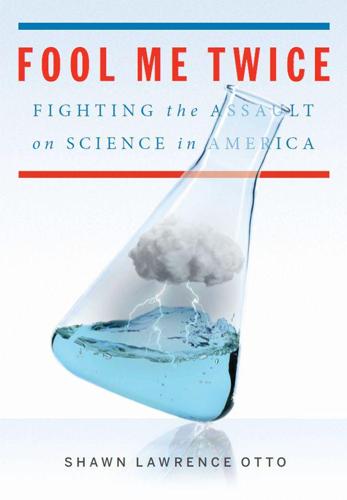
Fool Me Twice: Fighting the Assault on Science in America
by
Shawn Lawrence Otto
Published 10 Oct 2011
DEAF, DUMB, AND BLIND The intellectual erosion of the 1970s, 1980s, and 1990s, as science sat silently on the sidelines and antiscience rose to rule on both the left and the right, was greatly worsened in August of 1987 when, during the administration of President Ronald Reagan, the Federal Communications Commission (FCC) abolished what was called the “fairness doctrine” in an historic 4–0 vote, severing one of the last ties to a common public foundation of knowledge and its cousin, the carefully researched public record that journalists had worked for sixty years to build. The doctrine had its roots in the Radio Act of 1927 and had been a formal policy of the FCC since 1949, when television went mainstream.
…
Field-dependent personalities are more socially oriented than others and require externally defined goals and reinforcements.7 Field-independent personalities are more analytical and tend to have self-defined goals and reinforcements. Educators have developed strategies for teaching people with each learning style. Those field-dependent citizens in the population who valued authority and looked to it for guidance needed the protection of the fairness doctrine to give them a perspective on reality. In its absence, many of today’s field-dependent people have drifted under the influence of the conservative dominance in the commercial media, creating one of the most divided political climates in American history. It made sense that this would happen.
…
You could do this by rewarding quality with a peer-review system like that used in scientific publishing, but review by outside peers is difficult in the extremely short time frame of competitive news gathering. Or you could get broadcasters to perform an abbreviated form of the peer-review process internally, which is what the fairness doctrine did. By repealing the policy, the FCC forced news programs into financial competition with entertainment—the marketplace of emotions. Broadcasters were forced to turn to the tools that deliver audience share, and those tools are the four horsemen. It was the success of highly partisan, emotion-driven commentators like Limbaugh that took market share away from broadcasters who presented the news more evenhandedly.
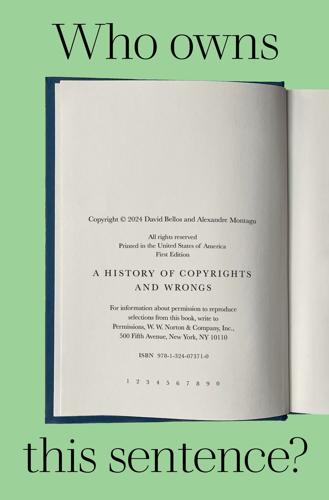
Who Owns This Sentence?: A History of Copyrights and Wrongs
by
David Bellos
and
Alexandre Montagu
Published 23 Jan 2024
If an ambitious woman washes her hands compulsively after a murder committed by her spouse, then that too belongs to the unrestricted stock of literary resources since Shakespeare used it in Macbeth. Taken to a logical extreme, the scene a faire doctrine would exempt the plots of almost all novels, plays and movies ever created, since truly unprecedented narrative twists are as rare as hen’s teeth.160 Unsurprisingly, most invocations of the scene a faire doctrine, first introduced in the U.S. in 1942 in a suit against a film studio, have arisen in cases involving movies: Hoehling v. Universal City Studios, 1980; Anderson v. Paramount, 1985; Walker v.
…
Koons (1992), discussed in Alexandre Montagu, Intellectual Property: Money and Power in a New Era, Westlaw, 2012, pp. 26–7. 160There is even a catalogue of all the dramatic plotlines ever used: Étienne Souriau, Les Deux cent mille situations dramatiques, Paris, Flammarion, 1950. 161These references from Leslie A. Kurtz, “Copyright: The Scenes a Faire Doctrine”, Florida Law Review, vol. 79, 1989. 162Nichols v. Universal Pictures, 1930. CHAPTER 28 DO YOU OWN YOUR FACE? 163Pavesich v. New England Life Insurance (1905), quoted in Jennifer E. Rothman, The Right of Publicity: Privacy Reimagined for a Public World, Cambridge MA, Harvard University Press, 2018, p. 27. 164Lugosi v.
…
Comparative and International Analyses, Oxford, Oxford University Press, 2005 Gvosdev, Yuri, “Publishing and Book Distribution in the U.S.S.R.”, Library Quarterly 28.4 (1958), pp. 269–76 Hartley, Alexander, “Beckett’s Legal Scuffles and the Interpretation of the Plays”, Journal of Modern Literature, vol. 43, no. 3, 2020, pp. 132–49 Hesse, Carla, “Enlightenment epistemology and the Laws of Authorship in Revolutionary France”, Representations 30 (1990) Hesse, Carla, Publishing and Cultural Politics in Revolutionary France, 1789–1810, Berkeley, University of California Press, 1991 Hughes, Justin, “Locke’s 1694 Memorandum”, Cardozo Arts and Entertainment Law Journal, vol. 27, no. 2, 2010 Hugo, Victor, “Le Domaine Public Payant”, in Actes et paroles: depuis l’exil, vol. 4, pp. 100–8 Hugo, Victor, letter to Gino Daëlli, October 18, 1862 Hunter, David, “Copyright Protection for Engravings and Maps in Eighteenth-Century Britain”, The Library, vol. 9, no. 2, 1987 Hyde, Lewis, Common As Air: Revolution, Art and Ownership, New York, Farrar, Straus and Giroux, 2010 Jaszi, Peter, and Patricia Aufderheide, Reclaiming Fair Use: How to Put Balance Back in Copyright, Chicago, University of Chicago Press, 2018 Jefferson, Ann, Genius in France: An Idea and Its Uses, Princeton, Princeton University Press, 2015 Johns, Adrian, Piracy: The Intellectual Property Wars from Gutenberg to Gates, Chicago, University of Chicago Press, 2009 Jung, Carl-Gustav, “On the psychology and pathology of so-called occult phenomena” (1902), in Collected Works, Pantheon, 1953, vol. 1. Kant, Immanuel, “Von der Unrechtmässigkeit des Büchernachdrucks”, Berlinische Monatsschrift, vol. 5, 1785, pp. 403–17 Keymer, Thomas, and Peter Sabor, Pamela in the Marketplace, Cambridge, Cambridge University Press, 2005 Kurtz, Leslie A., “Copyright: The Scenes a Faire Doctrine”, Florida Law Review, vol. 79, 1989 Lessig, Lawrence, Free Culture: How Big Media Uses Technology and the Law to Lock Down Culture and Control Creativity, London, Penguin, 2004 Lethem, Jonathan, “The Ecstasy of Influence: A Plagiarism”, Harpers Magazine, February 2007 Leval, P. N., “Toward a Fair Use Standard”, Harvard Law Review 103 (1990), pp. 1105–36 Litman, Jessica, Digital Copyright, Ann Arbor, MI, Maize Books, 2017 London, Jack, Martin Eden (1909), London, Penguin Classics, 1993 Longinus, On the Sublime, trans.

Making It in America: The Almost Impossible Quest to Manufacture in the U.S.A. (And How It Got That Way)
by
Rachel Slade
Published 9 Jan 2024
In America, freedom began to take on new meaning: deregulation, of literally everything, including the media. In 1987, when Justin turned twelve, the FCC abolished the Fairness Doctrine, a forty-year-old law that required news media to present opposing views and treat positions with a degree of neutrality. The purpose of the Fairness Doctrine was to ensure that the American voting public was well informed and exposed to diverse perspectives on issues in a truly fair and balanced way. Opponents of the law argued that the Fairness Doctrine violated free speech, a challenge that had previously been debunked in upper courts. This time, the Republican-led FCC devoured itself.
…
W., 15 Bush, George W., 52, 62, 63, 91 Butler, Dave, 180, 221 Buy American Act of 1933, 129n Berry Amendment, 129n, 232n C Cambodia, 25, 38, 257 Cameron, David, 138 Campbellsville, Kentucky, 257–58 Amazon and, 268–69 Fruit of the Loom closure, 268 Carhartt, 27, 139 Carleton Woolen Mill, Winthrop, Maine, 45–48 Carnegie, Andrew, 180 Cartwright, Edmund, 8 Cascade Woolen Mill, Oakland, Maine, 40–41 Casco Bay Wool Works, Portland, Maine, 39–49, 100 closing of, 49 founding of, 40 income growth and employees, 44–45 loss of suppliers, 48–49 Maine Maid Outerwear, 39–40, 44 NAFTA and closing of, 45–46 CFTC (Commodity Futures Trading Commission), 156 Champion Mills, 135 bought out by Sara Lee (1989), 139 factory moved to China, 168 factory moved to North Carolina, 139 NAFTA and move to Mexico, 139 sweatshirt produced by, 135–36 Charney, Dov, 252, 264 Child Labor Amendment of 1924, 134 Chile, 72–73 China American apparel, percentage produced by, 231 American manufacturing sent to, 18 American mills that offshored to, 168–69 Biden administration and, 275 as biggest cotton buyer, 156 British East India Company and, 13–14 Champion Mills moved to, 168 as competitor for American-made goods, 143, 231 currency manipulation and, 212 development of Suzhou, 85–86 global manufacturing domination, 68 global cotton market and, 231–34, 235 hourly rate for labor in, 169 as market for western goods, 46–47 sanctions on, and retaliation, 233 subsidizing manufacturers, 68, 212 sweatshirt production, 29 textile and clothing production domination, 129, 257 as a threat to the U.S., 68 unfair trade practices, 68 U.S. tariffs and, 68 U.S. trade deficit to, 68 Uyghur oppression, 233–34 WHO and, 18, 68, 143 workforce in, 86 CHIPS-Plus Act of 2022, 296 Chouinard, Yvon, 110 CIA, 13, 15 in Chile, 72 in China, 246 in the Congo Republic, 246 Contras and, 15 in the DRC, 246 right-wing coups and, 15, 71 Operation Condor, 15 Cinderella Man (film), 100 Cleaves, Adam, 279 Coal Industry Retiree Health Benefit Act of 1992, 195–96 Coastal Enterprises, Inc., 119 Colbert, Stephen, 140 Cold War, 71–72 Common Threads, Portland, Maine, 122–23, 123n, 128 Congo, Democratic Republic of (DRC), 123–24 Congo Republic, 245–47 Congress of Industrial Organizations (CIO), 64 Conway, Thomas, 217 Coolidge, Calvin, 204, 205 Corbyn, Jeremy, 73 Cornered: The New Monopoly of Capitalism and the Economics of Destruction (Lynn), 259, 261 Corson, Holland, 293 cotton China and, 156, 231–34, 235 cotton gin and, 8–9, 155 environmental issues, 154 futures market and, 156 ginning co-ops, 155 Indian cotton, 154–55 Monsanto’s seed monopoly, 154 Noxubee harvest, 154–55 Pilchman’s American Fabrics and, 168, 231–32 price increases, 231–32 quality monitored by the USDA, 156 U.S. exports, 155–56 U.S. as major grower, 132, 152–56 Covid-19 pandemic, 200–201, 211–13, 227, 234, 242–43, 276, 285 American Roots and, 200–201, 209, 210, 213–19, 223–26, 239, 242–43, 276, 285 brands cancelling orders and, 24 companies closed by, 193, 276 dependency on imports and, 211 drug shortage during, 299, 300n hoarding and, 213–14 market uncertainty and, 232, 276 masks and PPE shortage, 211, 214 national divisiveness and, 222 raw goods shortages, 231 Sintex Industries bankruptcy, 156 vaccines, 231 Waxmans’ Washington Post op-ed, 218, 220 Crawford, Lucy, 5–6, 7 Crown family, 78, 79 Obama and, 78 Whirlpool plant shutdown, 78–80 cryptocurrencies, 14n CSIS (Center for Strategic and International Studies), 297 D Daitch, Mike, 239–40 Dana, Woodbury, 174–75 Dana Warp Mill, Westbrook, Maine, 172, 174–75 Dartmouth College, 102 Davis, Isaac, 201–2 Dawes Act of 1887, 203 de Kooning, Willem, 59n Dell, Michelle, 88–89 Delphi Automotive, Dayton, Ohio, 77 Delta Air Lines, 153 Democratic Party AFL-CIO and, 52–53, 70, 74 free trade, offshoring, and, 70 neoliberalism and, 70, 195 Department of Defense (DOD) prison labor used by, 129–30n required to purchase American-made goods, 129n, 130, 232 spending on textiles and apparel (2021), 129n Depp, Johnny, 119 Devlin, Patti, 193–97, 211, 274 American Roots investment, 196, 227 on bringing back American manufacturing, 196–98 Dexter, Maine, 189–90 Dexter Shoe Co. in, 189, 190, 191–93 Dickens, Charles, 9 Du Pont family, Winterthur museum, Delaware, 34 E Eastman Kodak, 83–85 Japan’s Fujifilm imports and, 84, 85 Eban, Katherine, Bottle of Lies: The Inside Story of the Generic Drug Boom, 299n Eddie Bauer, 110 Eisenhower, Dwight D., 63, 207 Enter the Wu-Tang (album), 137 environmental issues agricultural monoculture, 152–54 cotton and, 154 fabric dye disposal and, 22 GDP not inclusive of, 17 textile manufacturing and, 21–22 used clothing disposal, 22–23 WTO’s detrimental effects, 16 Esquire, 146 Trumka profile, 78–79 Evans, Walker, 59n Evil Geniuses: The Unmaking of America (Andersen), 11 F Factory Man (Macy), 68–69 Fair Labor Standards Act of 1938, 134 Fairness Doctrine, 191 Fall River, Massachusetts, 217, 243, 279 Merrow company in, 40, 244–45, 247 Fanatics, 289 Farley, William, 258–59, 260 Farmstead Magazine, 33 FDRA (Footwear Distributors & Retailers of America), xii Federal Prison Industries, 129–30n Feinbloom brothers, 135–36 Fetterman, John, 139, 139n Feuerstein, Aaron, 105–6, 109–11, 129, 130 Feuerstein, Raphael, 110 Feuerstein, Samuel, 105–6 Flowfold company, Maine, 213 Floyd, George, 220, 241 Ford, Henry, 203, 256 Frazier, Joe, 137n free trade/free market theory, 4–5, 11–15, 24, 33, 63, 71 American economy and, 19, 235 Chile and, 72–73 devastating effects of, 19, 20, 91 ethical or social agenda absent, 23 first American victims of, 18 IMF and, 71 NAFTA and, 15–16, 18–19 Reagan and, 185 USMCA and, 19 WTO and, 16, 22, 84 See also NAFTA Friedman, Milton and Rose, 11–12, 14, 72, 111 Friedman, Vanessa, 139 Frost, Robert, 106 Fruit of the Loom, 234, 252, 257–60, 268 bankruptcy of, 263, 264 Farley takeover, 258–59, 263–64 offshore production of, 262–63 stock buyback at, 263–64, 263n G General Dynamics, 79 George, Billy, 53, 59 Gildan Activewear SRL, 232 Gingrich, Newt, “Language: A Key Mechanism of Control,” 192 Glass-Steagall Act, 94 globalization, 18, 70 Buffett’s miscalculation about, 192 NAFTA, WTO, and, 192 U.N.

The Death of Truth: Notes on Falsehood in the Age of Trump
by
Michiko Kakutani
Published 17 Jul 2018
In one diatribe, Limbaugh asserted that “the Four Corners of Deceit are government, academia, science, and the media.” He also declared that “scientists wear white lab coats and they look really official” but “they’re frauds. They’re bought and paid for by the left.” In the three decades since the FCC revoked the Fairness Doctrine (which required TV and radio stations to devote some of their programming to important issues of the day and air opposing views on those issues) and the two decades since Roger Ailes and Rupert Murdoch launched Fox News, right-wing media has grown into a sprawling, solipsistic network that relentlessly repeats its own tropes (the dangers of immigration, the untrustworthiness of mainstream media, the evils of big government, and so on), and it’s succeeded in framing many debates in the national conversation through its sheer shamelessness and decibel level.
…
“further apart from one another”: Pew Research Center, “Political Polarization in the American Public”; Pew Research Center, Partisanship and Political Animosity in 2016. “the Four Corners of Deceit”: “The Four Corners of Deceit: Prominent Liberal Social Psychologist Made It All Up,” Rush Limbaugh Show, Apr. 29, 2013. In the three decades since the FCC: Dylan Matthews, “Everything You Need to Know About the Fairness Doctrine in One Post,” Washington Post, Aug. 23, 2011; Yochai Benkler et al., “Study: Breitbart-Led Right-Wing Media Ecosystem Altered Broader Media Agenda,” Columbia Journalism Review, Mar. 3, 2017; Maggie Haberman and Glenn Thrush, “Bannon in Limbo as Trump Faces Growing Calls for the Strategist’s Ouster,” New York Times, Aug. 14, 2017; Michael J. de la Merced and Nicholas Fandos, “Fox’s Unfamiliar but Powerful Television Rival: Sinclair,” New York Times, May 3, 2017.

Dawn of the New Everything: Encounters With Reality and Virtual Reality
by
Jaron Lanier
Published 21 Nov 2017
Why couldn’t the same thing happen in the USA? If Democrats, say, owned all the TV stations in a region, then the Republican Party could just go home. Therefore, according to the Fairness Doctrine, anyone using the public airwaves was obliged to show all points of view, not just preferred ones. TV was the public’s resource. It’s an idea that sounds both radical and quaint today, and indeed it was snuffed out by Ronald Reagan long ago. But at the time, the Fairness Doctrine seemed sensible to most people across the political spectrum. Even so, the law hadn’t been tested much. A batch of friends and I decided to give it a go.
…
Back in New Mexico, I learned to stage media stunts. I had myself doused with water while holding a banner that read I AM DRY. This was to publicize the brine pockets found in the supposedly dry nuclear waste site near Carlsbad. Consensus and Sensibility An obsolete body of American law called the Fairness Doctrine declared that the public owned the airwaves that carried TV and radio signals. But, there could only be a few broadcast stations in practice, because that’s the way analog electromagnetism works. TV was powerful. It was becoming the essential platform in politics. If the owners of only a handful of TV stations coordinated to present biased or false news, there was no comparably powerful mechanism available for other parties to present an alternative.
…
ethical filtering eugenics Evergreen College everything dreams of previous, drugs as evolution Exorcist, The (film) experiences, as allegories experimental music experimental programming language eye contact Eyematic EyePhone EyePhone HRX eyes face blindness (prosopagnosia) Facebook facial expression facial recognition facial tracking Fairness Doctrine Fakespace Fantastic magazine FBI “Feelies” Feiner, Steve feminist game designs Fermi Paradox Feynman, Richard field of view figure eight sensorimotor loop financial incentives Finite and Infinite Games (Carse) Fisher, Scott fitness bands flight simulators floating holograms flute flying saucers force feedback Ford Motors forgeries form factor Forster, E.M.

A Generation of Sociopaths: How the Baby Boomers Betrayed America
by
Bruce Cannon Gibney
Published 7 Mar 2017
Causation may run both ways, but the fact is that people who watch commercial broadcast TV news are significantly unrepresented in the category of people highly knowledgeable on matters of current events, the mechanics of government, etc.18 The warping effects of all these problems, from the collapse of the Fairness Doctrine to the limitations of TV and its presentation of the news, could be seen in the Boomers’ avatar Donald Trump. Like many of his generation, Trump relies heavily on TV news, and expects his preferred channels to cater to him first and reality second (if at all). When even the hermetic world of Fox proved insufficiently fawning, Trump tried with some success to conform the news to his preexisting conceits. The spectacle of The Donald bullying Fox in the crudest terms alarmed certain audiences, but after the Fairness Doctrine collapsed, that event was exceptional only in that an individual informed a network of his preferences directly, rather than the network divining those preferences through the inexact map of ratings.
…
One of the redeeming features of Buckley/Vidal was that it featured two people who, however ill behaved in the moment, were intelligent expositors of genuinely different points of view on matters of substance (rather than, say, two different points of view on a starlet’s outfit at the Oscars). Early in TV’s history, networks felt obliged to present controversial issues like the ones featured in Buckley/Vidal in a fair and balanced way (in the original legal sense, not the Fox News sense). The FCC enshrined this ideal in the Fairness Doctrine, enacted in 1949.15 By 1974, the FCC found that it had never had to enforce it because broadcasters had voluntarily complied with the “spirit” of the rule; that’s not to say the networks were saints, only that they made modest gestures toward balance.16 By the 1980s, as Boomers achieved political power, broadcasters were freed to dispense with even the modicum of balance that guilt previously induced them to provide.
…
The FCC enshrined this ideal in the Fairness Doctrine, enacted in 1949.15 By 1974, the FCC found that it had never had to enforce it because broadcasters had voluntarily complied with the “spirit” of the rule; that’s not to say the networks were saints, only that they made modest gestures toward balance.16 By the 1980s, as Boomers achieved political power, broadcasters were freed to dispense with even the modicum of balance that guilt previously induced them to provide. In 1987, FCC chairman Marc Fowler—himself a (Canadian variety) Boomer, and so oblivious that he dismissed TV as “a toaster, with pictures”—formally abolished the Fairness Doctrine.17 The elimination of the Doctrine permitted the rise of ideologically driven channels, preaching to their respective choirs, a project completed in the 1990s when Fox News and MSNBC were disgorged by their parent companies. Dialogue became diatribe aimed at an agreeable audience in the same period that Boomers consolidated their control of governments.

Forward: Notes on the Future of Our Democracy
by
Andrew Yang
Published 15 Nov 2021
Though there was no rule that equal time must be afforded, if you presented one side, you had to at least make space for opposing perspectives. This rule was repealed in 1987 by the Reagan administration, which tried to deregulate just about everything under the sun. There has recently been some interest in reviving it because people believe—correctly—that the end of the fairness doctrine led to a more polarized media landscape and population. Restoring the fairness doctrine would dramatically change the tenor of the coverage on Fox and MSNBC in particular, because they would be forced to introduce more balanced points of view on any issue of public importance or face FCC fines. Would this be a bad thing? I doubt it.
…
As we established in previous chapters, cable news business models mean the networks are incentivized to keep their coverage polarizing and dramatic. But the idea of regulating the media to ensure balance is actually woven into broadcasting history. Between 1949 and 1987 the Federal Communications Commission (FCC) had a rule—the fairness doctrine—that said broadcasters must present controversial issues of public importance in a way that was honest, equitable, and balanced. In practice, this meant that broadcasters who aired commentary on one side of an issue would then make sure that the other point of view was also represented. Though there was no rule that equal time must be afforded, if you presented one side, you had to at least make space for opposing perspectives.

Capitalism 3.0: A Guide to Reclaiming the Commons
by
Peter Barnes
Published 29 Sep 2006
The airwaves themselves would remain, in theory, public property, with the Federal Communications Commission (again in theory) acting as trustee. Sharing Culture | 125 Private broadcasters grew large and profitable under this arrangement. But over time, as their advertising revenues soared, their publicinterest obligations declined. In the 1980s, the FCC dropped the Fairness Doctrine, which required broadcasters to air both sides of controversial issues. Educational programming also waned. In the 1990s the spread of cell phones created huge new demand for airwaves. Instead of giving frequencies to cell phone companies for free, Congress wisely chose to auction them, raising billions of dollars for the federal treasury.
…
See carbon emissions; pollution Employee Retirement Income Security Act of 1974, 81 enclosure, 17–20, 26, 45, 128 Endangered Species Act of 1973, 81–82 England, 16–17, 109, 114, 118, 119 entrepreneurs, 158–60 EPA (Environmental Protection Agency), 36, 88, 141 equality. See inequality externalities, 19–20, 91 C A P I TA L I S M 3 . 0 F Fairfax, Sally, 44 Fairness Doctrine (FCC), 125 farmers’ markets, 138–39 farmers/farming, 81–82, 92, 151, 165 Federal Communications Commission (FCC), 124–25 Federal Reserve, 40–41, 86–88, 124 Federalist Papers (Madison), 99 feedback loops, 8–9 food production local food sources, 138–39, 165 organic, 92, 151, 165 and politics, 81–82 pollution, 141–42 Founders of U.S. on birthrights, 103 on democracy, 99 on property, 34, 108, 110 on the pubic domain, 128 See also Constitution free market environmentalism, 58–61 future generations as beneficiaries of commons trusts, 65, 74–75 and commons trusts, 84–85, 88, 89 and commons trustees, 48, 99, 100, 153, 164 as property-less, 38–39 responsibility to, 11, 12, 14 and state of our planet, 3, 10 G Galbraith, John Kenneth, 23 Gates, Bill, Jr., xiv Gates, Bill, Sr., 111–12 Geisel, Theodor (Dr.
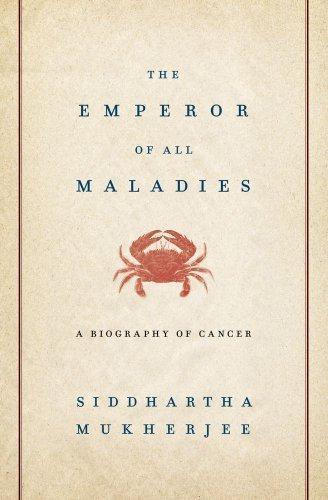
The Emperor of All Maladies: A Biography of Cancer
by
Siddhartha Mukherjee
Published 16 Nov 2010
In 1966, a young attorney barely out of law school, John Banzhaf, pushed that strategy even further. Brash, self-confident, and iconoclastic, Banzhaf was lounging at home during the Thanksgiving holiday of 1966 (watching the omnipresent cigarette ads) when his mind raced to an obscure legal clause. In 1949, Congress had issued the “fairness doctrine,” which held that public broadcast media had to allow “fair” airtime to opposing viewpoints on controversial issues. (Congress had reasoned that since the broadcast media used a public resource—airwaves—they should reciprocate by performing a public function, by providing balanced information on controversial issues.)
…
The FTC had attacked the disingenuousness of the tobacco industry’s advertising efforts. Could a parallel strategy be used to attack the disproportionality of its media presence? In the early summer of 1967, Banzhaf dashed off a letter to the Federal Communications Commission (the agency responsible for enforcing the fairness doctrine) complaining that a New York TV station was dedicating disproportional airtime to tobacco commercials with no opposing antitobacco commercials. The complaint was so unusual that Banzhaf, then on a four-week cruise, expected no substantial response. But Banzhaf’s letter had landed, surprisingly, on sympathetic ears.
…
“Statistics,” the journalist Paul Brodeur once wrote, “are human beings with the tears wiped off,” and thus far the antitobacco campaign had offered plenty of statistics, but with the human victims of tobacco somehow effaced. Litigation and regulation had occurred seemingly in the abstract; the FCLAA warning-label action and the fairness-doctrine case had been fought on behalf of cigarette “victims,” but faceless and nameless ones. The final rondo of legal assaults against tobacco would, at long last, introduce the American public to the real victims of tobacco, men and women who had quietly been succumbing to lung cancer while Congress had deliberated the pros and cons of attaching a nine-word sentence to a packet of cigarettes.

Jihad vs. McWorld: Terrorism's Challenge to Democracy
by
Benjamin Barber
Published 20 Apr 2010
That being the case, its goal must be “economic harmonization with Western Europe”—some-thing requiring radical economic reform (a “Big Bang” as the Poles called it) and ongoing economic “shock therapy.”12 Laissez-faire doctrines can imperil the nation-state, but at least the nation-state possesses a sovereign power capable of countering raw capitalism’s materialistic, privatizing consequences. In the international economy, laissez-faire doctrines are fatal, for here sovereignty vanishes and aggressive transnational bodies pursue market strategies in the absence of any countervailing regulatory bodies whatsoever. Kuttner notices that “as the ethic of laissez-faire gained ground, it did so almost in lockstep with the relative decline of its prime sponsor”—the United States.13 While earlier incarnations of international institutions like the International Monetary Fund and the World Bank permitted the flexing of American muscle in a world arena, America’s diminishing power leaves such institutions at the mercy of the true multinationals of our epoch, the transnational corporations and thousands upon thousands of nongovernmental interest groups and associations that constitute the international market.
…
Who exactly is to represent the public interest or the common good in this Darwinian world of corporate predators that just happen to control the defining symbolic essentials of civilization remains moot. Few even raise the question. The multiplicity of broadcast and cable spectra has made the old fairness doctrine obsolete and just about put the F.C.C. out of business. A modest regulatory bill cognizant of the new technologies was left twisting in the wind (along with a lot of other legislation) in the 1994 Congress. Even that bill, sponsored by Senator Ernest F. Hollings, was as much about curtailing as initiating regulations pertinent to the establishment of the new information highway and even the Baby Bells (local phone companies) who would have been subject to its regulations were disappointed in its failure since they were depending on it to legitimize their entry into the cable television and long-distance business.

Ashes to Ashes: America's Hundred-Year Cigarette War, the Public Health, and the Unabashed Triumph of Philip Morris
by
Richard Kluger
Published 1 Jan 1996
But he was aware of the FCC’s “fairness doctrine,” requiring broadcasters to allow free time to state opposing views on matters of public controversy dealt with on the air. While the doctrine was almost always invoked in connection with the programming sector, Banzhaf did not see why it shouldn’t apply with equal force to commercials, which consumed nearly one-fourth of the broadcast day. As a charged-up youngster with technical training eager to see if he could put his new legal learning to practical application, Banzhaf wrote to the FCC for a pamphlet explaining how the fairness doctrine worked and then fired off a letter in December to WCBS-TV in New York, the station that had carried the football telecast with the offending cigarette commercials.
…
Television and radio, moreover, were manifestly different from print media; broadcast messages were “in the air” and absorbed subliminally or even subconsciously by those tuned in, and what with most homes in that era possessing a single television set that was often the focus of family attention, TV was a pervasive and uniquely mind-shaping, not to say brainwashing, medium. Congress, of course, could have outlawed cigarettes, Geller conceded, but its not having done so on pragmatic grounds did not affect the FCC’s statutory power to impose the fairness doctrine on tobacco products. Hyde and all his colleagues agreed. Early in June 1967, WCBS-TV received a three-page letter from the FCC stressing in a preliminary ruling that “our holding is limited to this product,” the normal use of which was so hazardous that “a station which presents such advertisements has the duty of informing its audience of the other side of this controversial issue” and must provide “a significant amount of time for the other viewpoint.”
…
One Washington antismoking activist who dealt with him in later years once remarked of Banzhaf, “He is the sort of person who, upon arising in the morning and seeing the sun shining, assumes there must be a connection between the two events.” Convinced that the FCC needed significant outside support to sustain its ruling but fearful that he did not have the skills, time, or money to go up against the big law firms attacking the commission’s application of the fairness doctrine to cigarette ads, Banzhaf kept after the Interagency Council. He was granted an audience by Emerson Foote, who found the young man “too brash” and advised him afterward that the council could be of no useful assistance to him. The other agencies Banzhaf approached were likewise uncooperative.

The Authoritarian Moment: How the Left Weaponized America's Institutions Against Dissent
by
Ben Shapiro
Published 26 Jul 2021
Darcy even called up cable platforms to attempt to pressure them.53 This stuff is fully delusional: were conservatives to be deprived of Fox News, they’d seek similar conservative outlets. But that delusion is consistent with the authoritarian Left’s true goal: a reestablishment of the media monopoly it had before the death of the Fairness Doctrine and the rise of Rush Limbaugh. Many on the authoritarian Left celebrated when Limbaugh died, declaring him “polarizing.” The reality is that they were polarizing, but they had a monopoly . . . and Limbaugh broke that monopoly. Now they want to reestablish it, at all costs. This is why the media grow particularly vengeful when it comes to distribution of conservative ideas via social media.
…
See New Ruling Class Emerging Democratic Majority, The (Teixeira and Judis), 65 Emhoff, Douglas, 78 empathy, as liberals’ definition of virtue, 34 Enlightenment principles individualism and, 87–89, 107 Scientism and, 107 entertainment, radicalization of Academy Awards and wokeness, 139–43 cancel culture and, 147–50 cultural impact of, 143–47 indoctrination to wokeism and, 160–61 renormalization of Hollywood, 145–47, 150–54 renormalization of sports, 154–60 Epstein, Joseph, 78 Equal Justice Initiative, 121 Equinox, 133 ESPN, 155–59 Evergreen State College, 93 Expensify, 131 expressive individualism, universities and, 87–89 Facebook, 205, 211 algorithms for censorship and “fact checking,” 192, 202–5 “hate speech” policy, 204–5 and left’s reactions to storming of U.S. Capitol, 12–13, 210 restrictive content regulations of, 183–84 Section 203 and, 194 shift to role as information gatekeeper, 196–98 Fairness Doctrine, media and, 182–83 “fake news” concept, 195–96. See also media Fat Studies (journal), 85 Feinberg, Joel, 35 Feinstein, Dianne, 195–96 First Amendment. See freedom of speech and the press First National Bank of Omaha, 135 Flanagan, Caitlyn, 186 Floyd, George, 99–100, 163–64. See also Black Lives Matter Fox News, 182, 184 Frankfurt School, 6–9, 54 freedom of speech and the press conservative media and cancel culture, 180–85 Left sees as protection for special groups, 170–71 social media and “hate speech,” 26, 204–5 Freeman, Morgan, 160 Frenkel-Brunswik, Else, 7 Friedersdorf, Conor, 42 Fromm, Erich, 54 “frozen prejudices,” minority coalitions and, 39 Fruit by the Foot, 121 Fuller, Joseph, 75–76 Gabbart, Blaine, 157 Galam, Serge, 39 Galligan, Jimmy, 207 Garber, Megan, 152 Garcetti, Eric, 101 Garza, Alicia, 123 Gay and Lesbian Alliance Against Defamation (GLAAD), 147–48 Gebru, Timnit, 206 Gender, Place, and Culture (journal), 85 gender dysphoria, ScienceTM and, 112–13 Georgia, 135, 146 Ghostbusters (2016 film), 151–52 Giannulli, Olivia Jade, 74–75 Giridharadas, Anand, 184 Glasser, Ira, 92–93 Glassman, Greg, 122 Gleiberman, Owen, 151 Goldberg, Jeffrey, 175 Goldberg, Jonah, 51 Goldman Sachs, 128 Gone With the Wind (film), 148 Gonsalves, Gregg, 102 Goodell, Roger, 160 Google, 194–95, 206, 211 Parler banned by, 12, 210 Goolsbee, Austan, 138 Goya, 133 Gray, Freddie, 140 Great Depression and Great Society, Utopian Impulse and results of, 50–51, 52 Green Book (film), 140 Green New Deal, 109 Gregory, Thomas, 49 Groves, Mimi, 206–7 gun rights, corporations and, 135–36 Gupta, Vanita, 191 Gushers, 121 Halpin, John, 64–65 Ham, Mary Katherine, 177 Hannah-Jones, Nikole, 11, 29, 115, 165, 178–80 Harding, Warren G., 49 harm, left’s lack of distinction between offense and, 35 Harris, Adam, 80 Harris, Leslie, 179 Harris, Sam, 16, 111 Harris poll, 156 Hart, Kevin, 142–43 Harvard Business Review, 126 Harvard Crimson, 91 Harvard University, 90 hashtag #MeToo, 142 hashtag #OscarsSoWhite, 140 Hastings, Reed, 121 hate speech.

The Future of the Internet: And How to Stop It
by
Jonathan Zittrain
Published 27 May 2009
. & LITERATURE 167, 189 (2000) (“[W]e have fewer opportunities to present ourselves publicly in all of our complexity; and, therefore, as more of our private lives are recorded in cyberspace, the risk that we will be unfairly defined by isolated pieces of information that have been wrenched out of context has increased dramatically”); see also ROSEN, THE NAKED CROWD: RECLAIMING SECURITY AND FREEDOM IN AN ANXIOUS AGE, supra note 40, at 55—57 (2001) (describing how Larry Lessig was hurt by an e-mail discussing Microsoft that was taken out of context and then used against him). 134. See, e.g., RICHARD DELGADO & JEAN STEFANCIC, UNDERSTANDING WORDS THAT WOUND 207 (2004). 135. This kind of compelled speech would not be unprecedented. For much of the twentieth century, the FCC’s Fairness Doctrine forced broadcasters to air controversial public interest stories and provide opposing viewpoints on those issues. See Steve Rendall, The Fairness Doctrine: How We Lost It and Why We Need It Back, EXTRA!, Jan./Feb. 2005, http://www.fair.org/index.php?page=2053. Under President Reagan, the FCC repealed this doctrine in 1987. Id. Despite this administrative change, the Supreme Court has consistently interpreted the First Amendment to include the right not to speak in a line of compelled speech cases.
…
See also spam EMI (music company), 121 Encarta Web site, 146, 160 encryption, 208 Encyclopaedia Britannica, 131, 137, 198, 226 endpoint: control over, 125–26; disconnectedness of, 33, 41; end-to-end theory, 31, 164–67, 250n2; generative, 105; importance of, 8, 18, 180; lockdown of, 106, 155; non-generative, 106, 164; potential compromise of, 41–42, 167–68; regulation applied to, 8, 105–6; security worries about, 106–7, 164, 166; varying levels of accessibility, 30 envelope information, 187 epinions.com, 146 “ESP” game, 207 Facebook, 184, 226 facial recognition technology, 214–15 fair use defense, 115, 121–22 FBI, 110, 113, 118, 187 FCC (Federal Communications Commission): and AT&T, 21, 26; Fairness Doctrine, 323n135 Federalist Papers, 317n67 FIDOnet, 25–26, 27, 29, 237 Fifth Amendment, 112 file sharing, illegal, 111–12, 197 filtering systems, 46, 111, 114–15 FIND initiative. See National Science Foundation, FIND initiative of Firefox, 54, 184 firewalls, 59 First Amendment, 114, 172, 230 Fisher, William, 92 Fiske, John, 92 Flickr, 123, 214, 226 floppies, virus spread by, 44 FON, 180, 194–95 Foreign Intelligence Surveillance Act (FISA), 187 Fourth Amendment, 112, 188 Freedom of Access to Clinic Entrances Act, 215 Freeman, Jody, 224 Free Software Foundation, 131, 189 free software philosophy, 77, 94, 131, 189, 190, 191–92 Friden Flexowriter, 12–13, 174 Friedman, Allan, 160 Funcade, 54 games, 15, 47, 57, 88 gated communities, 165 gatekeepers, 81, 93, 174, 286n101, 318n84 Gates, Bill, 3, 16, 184, 205 Gawker Stalker, 214 generative systems: absence of measurement in, 157–59; future strategies for, 175–99; legal responsibility in, 163–64; maintaining, 126, 173; maintaining regulators’ tolerance of, 193–99; non-generative vs., 188–92; and procrastination principle, 152, 164, 180, 242, 245; security in, 166; stability of, 153–74; use of term, 74; as what we make them, 242, 244–46; as works in progress, 152 generative technology: accessibility of, 72–73, 93; and accountability, 162–63; adaptability of, 71–72, 93, 125; affordance theory, 78; Apple II, 2; benefits of, 64, 79–80, 84–85; blending of models for innovation, 86–90; control vs. anarchy in, 98, 150, 157–62; design features of, 43; ease of mastery, 72; end-to-end neutrality of, 165; expansion of, 34; features of, 71–73; freedom vs. security in, 3–5, 40–43, 151; free software philosophy, 77; and generative content, 245; group creativity, 94, 95; hourglass architecture, 67–71, 99; innovation as output of, 80–84, 90; input/participation in, 90–94; leverage in, 71, 92–93; non-generative generative technology (continued) compared to, 73–76; openness of, 19, 150, 156–57, 178; pattern of, 64, 67, 96–100; as platform, 2, 3; recursive, 95–96; success of, 42–43; theories of the commons, 78–79; transferability of, 73; vulnerability of, 37–51, 54–57, 60–61, 64–65 generative tools, 74–76 generativity: extra-legal solutions for, 168–73; Libertarian model of, 131; and network neutrality, 178–81; paradox of, 99; recursive, 94; reducing, and increasing security, 97, 102, 165, 167, 245; repurposing via, 212; use of term, 70; and Web 2.0, 123–26 Geocities.com, 119, 189 GNE, 132–33, 134, 135 GNU/Linux, 64, 77, 89, 114, 190, 192 GNUpedia, 132 goldfish bowl cams, 158 “good neighbors” system, 160 Google: and advertising, 56; book scanning project of, 224–25, 242; Chinese censorship of, 113, 147; clarification available on, 230; data gathering by, 160, 221; death penalty of, 218, 220; image search on, 214–15; innovation in, 84; map service of, 124, 184, 185; privacy policy on, 306n47; and procrastination principle, 242; as search engine, 223, 226; and security, 52, 171; and spam, 170–73 Google Desktop, 185 Google News, 242 Google Pagerank, 160 Google Video, 124 governments: abuse of power by, 117–19, 187; oppressive, monitoring by, 33; PCs investigated by, 186–88; research funding from, 27, 28 GPS (Global Positioning Systems), 109, 214 graffiti, 45 Griffith, Virgil, and Wikiscanner, 151 Gulf Shipbuilding Corporation, 172 gun control legislation, 117 hackers: ethos of, 43, 45, 53; increasing skills of, 245 Harvard University, Berkman Center, 159, 170 HD-DVDs, 123 Health, Education, and Welfare (HEW) Department, U.S., privacy report of (1973), 201–5, 222, 233–34 Herdict, 160, 163, 167–68, 173, 241 Hippel, Eric von, 86–87, 98, 146 Hollerith, Herman, 11–12, 13; business model of, 17, 20, 24 Hollerith Tabulating Machine Company, 11–12 home boxes, 180–81 honor codes, 128–29 Horsley, Neal, 215 Hotmail, 169 “How’s My Driving” programs, 219, 229 HTML (hypertext markup language), 95 Hunt, Robert, 190 Hush-A-Phone, 21–22, 81, 82, 121 hyperlinks, 56, 89 hypertext, coining of term, 226 IBM (International Business Machines): antitrust suit against, 12; business model of, 12, 23, 30, 161; competitors of, 12–13; and generative technology, 64; Internet Security Systems, 47–48; mainframe computers, 12, 57; OS/2, 88; and risk aversion, 17, 57; System 360, 174 identity tokens, unsheddable, 228 image recognition, 215–16 immigration, illegal, 209 information appliances: accessibility of, 29, 232; code thickets, 188–92; content thickets, 192–93; and data portability, 176–78; generative systems compared to, 73–76; limitations of, 177; and network neutrality, 178–85; PCs as, 4, 59–61, 102, 185–88; PCs vs., 18, 29, 57–59; and perfect enforcement, 161; and privacy, 185–88; regulatory interventions in, 103–7, 125, 197; remote control of, 161; remote updates of, 106–7, 176; security dilemma of, 42, 106–7, 123–24, 150, 176–88; specific injunction, 108–9; variety of designs for, 20; Web 2.0 and, 102; See also specific information appliances information overload, 230 information services, early forms, 9 InnoCentive, 246 innovation: blending models for, 86–90; generativity as parent of, 80–84, 90; group, 94; and idiosyncrasy, 90–91; inertia vs., 83–84; “sustaining” vs.

The Quiet Coup: Neoliberalism and the Looting of America
by
Mehrsa Baradaran
Published 7 May 2024
It had no natural base of voters, because until voters were “educated” by Lewis Powell’s army, they had no taste for pure market capitalism. But neoliberals had endless funds and a plan of attack targeting every cultural and political institution. With assistance from the Federal Communications Commission’s fairness doctrine, which mandated all media to present “both sides” of controversial issues, the message got out. Powell’s media strategy of deploying articulate defenders of the free market found its man easily enough. He was the obvious choice: Milton Friedman took the neoliberal cause to the public in a ten-part PBS series called Free to Choose, released alongside a book of the same title in 1980.
…
According to Coates, the use of the First Amendment to protect this kind of speech was “not simply a New Lochnerism,” as Rehnquist had it; rather, by employing the First Amendment to achieve deregulatory goals, the Court was doing “what economists call ‘rent seeking,’ or in more legal language, socially wasteful transfers, or in ordinary language, theft, waste and graft.”36 Just as the Powell era did not merely revive Lochnerism, the neoliberal era was not merely a revival of neoclassical economics (a broad theory centered on production and consumption), as is sometimes claimed. Whereas laissez-faire doctrine of the Gilded Age essentially meant government nonintervention, neoliberalism was defined by extreme intervention on behalf of business. As corporate lawyer Powell instructed in his 1971 memo and Justice Powell demonstrated, the Court would be deployed to protect business from activist courts.
…
See pensions employment contracts, 212, 286 endless war, 361 Energy, Department of, 228–29 England, 57, 274 Enlightenment, 36 Enova International, 214 enterprise zones, 95, 316 entrepreneurialism, 18 environmental concerns and regulations, 77, 236, 237 Environmental Protection Agency (EPA), 90, 158, 236, 237 epidemiology, 23, 176 Epstein, Richard, 89, 139, 150, 178–79, 193, 204–6, 213, 233 “Unconscionability: A Critical Approach,” 204 Equal Employment Opportunity Commission, 73, 119 equal protection clause, 102, 118–21, 123–25, 127, 144 equal rights, 42, 78, 199 Erlichman, John, 18, 27, 74 Ethereum, 327, 330, 335–38 Ethereum classic (ETC), 338 Euclidean zoning, 122, 173, 378–79 eugenics, 35, 133–34, 362 Europe (European powers), 34–37, 40, 51, 65, 68, 248 eurozone crisis, 312 exchange rates, 58, 60 Export-Import Bank, 16 export nations, 95 Exxon (ExxonMobil), 47, 357 Facebook, xiv, 142, 320–22 Failure of Capitalism, A: The Crisis of ’08 and the Descent into Depression (R. Posner), 296–97 Fair Housing Act (1968), 16, 122 fairness, xxii, 134, 172, 173, 175, 196, 203, 233, 328 fairness doctrine, 93 Falwell, Jerry, 186, 187 Fama, Eugene, 233–34 family foundations, 89 family policies, 177–78 family values, 177, 188 Fannie Mae, 268, 295 Fanon, Frantz, 43, 94 The Wretched of the Earth, 40, 41 Farber, Daniel, 380 farm loans, 200 fascism, xvi–xvii, xxxv, xli, 57, 69, 355–60 Fauci, Anthony, xxiii fear, 14, 25, 67, 252, 267, 292, 322, 334, 361–62 Federal Arbitration Act, 209 Federal Bureau of Investigation (FBI), 5, 71 Federal Communications Commission, 93 Federal Deposit Insurance Corporation (FDIC), 256–57, 261, 310 Federal Election Campaign Act (FECA), 109–10 Federal Housing Administration, 122 Federalist No. 78, 154 Federalist Papers, 100 Federalist Society, 89, 123, 130, 136–39, 141–45, 147–58, 161, 179, 187, 211, 225, 280 Federal Reserve (Fed), 4, 14, 16, 27–28, 62, 65, 66, 184, 231, 240, 257, 259–61, 269, 273, 286, 289–91, 293–96, 298, 299, 304, 309–14, 317, 329, 361.
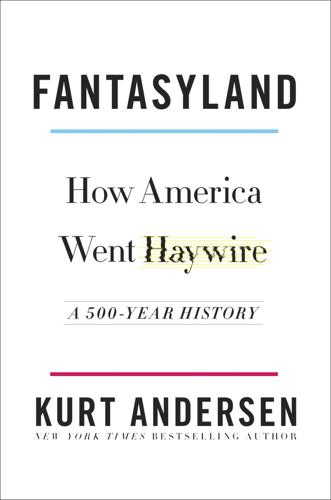
Fantasyland: How America Went Haywire: A 500-Year History
by
Kurt Andersen
Published 4 Sep 2017
When serious journalists started asking Clinton about having extramarital sex with an intern, the public was not so much alarmed as amazed and thrilled. Just before the Clintons arrived in Washington, the right had managed to do away with the federal Fairness Doctrine, which had been enacted to keep radio and TV shows from being ideologically one-sided. Until then, big-time conservative opinion media had consisted of two magazines, William F. Buckley’s biweekly National Review and the monthly American Spectator, both with small circulations. But absent a Fairness Doctrine, Rush Limbaugh’s national right-wing radio show, launched in 1988, was free to thrive, and others promptly appeared, followed at the end of Clinton’s first term by Fox News.
…
In any case, when the Washington gatekeepers decided to get rid of that regulatory gate, it was a pivotal moment, practically and symbolically. For most of the twentieth century, national news media had felt obliged to pursue and present some rough approximation of the truth rather than to promote a truth, let alone fictions. With the elimination of the Fairness Doctrine, a new American laissez-faire had been officially declared. If lots more incorrect and preposterous assertions circulated in our most massive mass media, that was a price of freedom. If splenetic commentators could now, as never before, keep believers perpetually riled up and feeling the excitement of being in a mob, so be it.
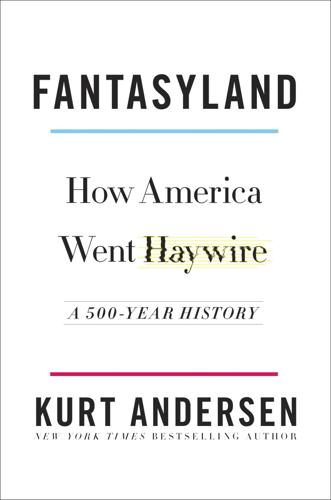
Fantasyland
by
Kurt Andersen
Published 5 Sep 2017
When serious journalists started asking Clinton about having extramarital sex with an intern, the public was not so much alarmed as amazed and thrilled. Just before the Clintons arrived in Washington, the right had managed to do away with the federal Fairness Doctrine, which had been enacted to keep radio and TV shows from being ideologically one-sided. Until then, big-time conservative opinion media had consisted of two magazines, William F. Buckley’s biweekly National Review and the monthly American Spectator, both with small circulations. But absent a Fairness Doctrine, Rush Limbaugh’s national right-wing radio show, launched in 1988, was free to thrive, and others promptly appeared, followed at the end of Clinton’s first term by Fox News.
…
In any case, when the Washington gatekeepers decided to get rid of that regulatory gate, it was a pivotal moment, practically and symbolically. For most of the twentieth century, national news media had felt obliged to pursue and present some rough approximation of the truth rather than to promote a truth, let alone fictions. With the elimination of the Fairness Doctrine, a new American laissez-faire had been officially declared. If lots more incorrect and preposterous assertions circulated in our most massive mass media, that was a price of freedom. If splenetic commentators could now, as never before, keep believers perpetually riled up and feeling the excitement of being in a mob, so be it.
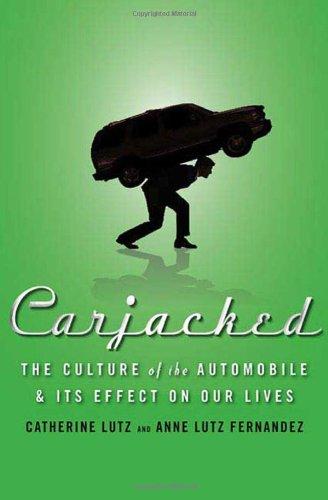
Carjacked: The Culture of the Automobile and Its Effect on Our Lives
by
Catherine Lutz
and
Anne Lutz Fernandez
Published 5 Jan 2010
WHY RUSH LIMBAUGH LIKES SPRAWL The MP3, DVD, and CD players in many new cars aside, most of us primarily use the good old radio for our in-car entertainment. And as we drive more, we listen more, and one of the media we have been listening to more is talk radio. The talk radio explosion in the late 1980s and 1990s is often credited to the repeal of the Fairness Doctrine, which had previously stipulated that broadcasted political opinion must be balanced. Four hundred stations across the United States hosted shows in the talk format in 1990; by 2008, this number had grown to 2,056—an increase of 500 percent.53 The audience has continued to grow in recent years, a phenomenon attributable in part to more Americans’ spending more time driving and listening to the car radio.
…
See also Technology. car prices, 46, 53, 58, 61–76, 80–1, 85, 88, 93, 107–9, 178, 214–5 car rental, 210–2 car repairs, xii, 5, 80–2, 92–6, 106–11, 120, 214 car safety: air bags and, 179, 184, 193, 195, 200, 203, 216, 228 cell phone use and, 147, 152, 154–5, 181, 194 crashes and, x, 23, 91–3, 120, 181–92, 227 driving habits and, 221–2 illusion of, 200–3 regulation, 174–176, 197–198 seat belts and, 18, 116, 184, 193–7, 203, 221, 228 teenagers and, 23, 52, 136, 181–3, 189, 197–8 car system, xi, xiii-xiv, 8–10, 15, 26, 33, 37–8, 91, 102–3, 121, 125–6, 162, 208, 228 car title loans, xiii, 118–9 car travel: miles driven, 6, 192 number of passengers in car, 4, 145 types of travel, 134–142 car trip diary, 140, 209–11 Card, Andrew H., 9 carlessness, xii, 15, 32, 101–2, 104–5, 114, 125 carpooling, 4–5, 72, 90, 107, 135, 140, 145–7, 157, 210–1, 219, 223 car-sharing, 212 Cars (film), 7, 51 Cash for Clunkers, 93 cell phone use, 147, 152, 154–5, 181, 194 Cheney, Dick, 9, 122 Chevrolet, xii, 16–7, 29, 35–7, 50, 88, 177–81, 216 Chevron, 122 Christine (film), 7 Chrysler, 1, 57, 73, 93, 123, 207 Claritas, 44–5 Clean Air Act, 167, 174–5 Cohen, Steven A., 124–5 Cold War, 17 collateralized debt obligations (CDOs), 124 Collins, Jane, 103 Commuter Choice, 220 commuters, 93, 132, 134, 138, 145–6, 156, 171, 211, 215 Connelly, Sheryl, 42 Conoco, 122 Consumer Reports, 46, 65, 213, 215 convenience as reason for car use, 4, 14, 38, 56, 135, 142, 154, 163, 239–40n26 Cortázar, Julio, 34 Crash (film), 101, 105 crossover vehicles, 57, 73, 157, 178, 180–1 cruise control, 75, 221 customizing, 27–9, 51, 53 Danziger, Pamela, 74 Davis, David E., Jr., 29 Day After Tomorrow, The (film), 34 De Cauter, Lieven, 146 dealerships, xi, xiv, 5, 16, 62–9, 74, 80, 85–6, 103, 207 DeHaven, Hugh, 195 Department of Motor Vehicles (DMV), ix, 19, 31, 219 depreciation, 60, 65, 70, 80–3, 87–8, 102, 212–5 Detroit, Michigan, xi, xiii, 8–9, 18, 43, 126, 195, 206, 224 Diallo, Ray, 123 Diamond, Jared, 99 diesel exhaust, 161, 170, 241n1 disabled, 31, 182–189, 200 Dodge, 35, 157 Downey, Robert, Jr., 13 Downs, Anthony, 133–4 downsizing, 98, 210–2, 217 driver’s licenses, 2–3, 18–22, 31, 106, 113, 139, 193, 219 driving: enjoyment of, 6, 14, 130, 140–144 under the influence (DUI), ix, 23, 95, 113, 152, 193–6, 202, 221, 237n16 “while black,” 112–4 Eastern States Nationals, 29 Edmunds.com, 85, 214, 236, 238, 246–7 electric cars, 36, 90, 215–6, 225–6 electronic stability control (ESC), 216 Emerson, Ralph Waldo, 15, 27 emissions standards, 120, 174–5 Exelbert, Gary, 47, 52, 76 Exxon Mobil, 120, 122 INDEX Fairness Doctrine, 149 Fast and the Furious, The (film), 7, 51 fast food industry, 52, 63, 163–4 fatalities, 35–6, 152, 172, 177, 180–2, 188–193 Federal-Aid Highway Act, 9 Financing, See under car ownership Firestone, 10, 195–6 Ford, Henry, 25, 27, 103, 205–6 Ford Motor Company: 1, 3, 15–7, 27, 49, 42, 51, 54, 56, 61, 73, 120, 124, 195–6, 199, 205–6 foreign policy, xii, 17, 21, 96–98, 224 Formula One, 51 fraud, 69–71 freedom: car as symbol and myth of, 15–21, 37–38, 133, 141–144, 154, 198 freedomCAR, 36 price of, 91 French Connection, The (film), 7 fuel economy standards, 9, 199, 226.

Calling Bullshit: The Art of Scepticism in a Data-Driven World
by
Jevin D. West
and
Carl T. Bergstrom
Published 3 Aug 2020
Straight-up information cannot compete in this new marketplace. PARTISANSHIP, PERSONALIZATION, AND POLARIZATION Much as the invention of the printing press allowed for a more diverse array of books, the advent of cable television allowed people to select specialized media outlets that closely reflected their views. Prior to 1987, the Fairness Doctrine of the US Federal Communications Commission (FCC) strived to ensure balanced coverage of controversial issues in news programming. But it was repealed under President Ronald Reagan. Hastened by the advent of the 24-hour news cycle, cable news channels proliferated and specialized in delivering specific political perspectives.
…
We have long advocated a legislative ban on targeted political advertising online, and are heartened by Twitter’s self-imposed moratorium. We would like to see users control the information that comes across their social media feeds, rather than being forced to rely on a hopelessly opaque algorithm. The justification for the FCC’s Fairness Doctrine was one of democratic necessity. For a democracy to function properly, a country needs an informed populace with access to reliable information. Similar arguments could justify governmental regulation of social media. A third and most powerful approach is education. If we do a good job of educating people in media literacy and critical thinking, the problem of misinformation and disinformation can be solved from the bottom up.

A Pelican Introduction Economics: A User's Guide
by
Ha-Joon Chang
Published 26 May 2014
In this view, the ideal government is the one that provides only the minimum conditions that are conducive to the exercise of such a right, such as law and order. Such a government (state) is known as the minimal state. The famous slogan among the liberals of the time was ‘laissez faire’ (let things be), so liberalism is also known as the laissez-faire doctrine. Today, liberalism is usually equated with the advocacy of democracy, given its emphasis on individual political rights, including the freedom of speech. However, until the mid-twentieth century, most liberals were not democrats. They did reject the conservative view that tradition and social hierarchy should have priority over individual rights.
…
As tax revenues were falling due to reduced levels of economic activity, the only way for them to balance their budgets was to cut their spending, leaving nothing to arrest the downward demand spiral.18 To make things worse, the Gold Standard meant that their central banks could not increase the supply of money for fear of compromising the value of their currencies. With restricted money supply, credit became scarce, restricting private-sector activities and thus reducing demand even further. Reform begins: the US and Sweden lead the way The Great Depression left a lasting mark on capitalism. With it came widespread rejection of the laissez-faire doctrine and serious attempts to reform capitalism. The reforms were particularly widespread and far-reaching in the US, where the Depression was the greatest and lasted the longest. The so-called First New Deal programme (1933–4) under the new president, Franklin Delano Roosevelt, separated the commercial and investment arms of banks (the 1933 Glass-Steagall Act), set up the bank deposit insurance system to protect small savers against bank failures, tightened stock market regulation (the 1933 Federal Securities Act), expanded and strengthened the farm credit system, provided a minimum farm price guarantee and developed infrastructure (such as the Hoover Dam – that’s the one you see in the 1978 Superman movie, starring the late Christopher Reeve), and so on.
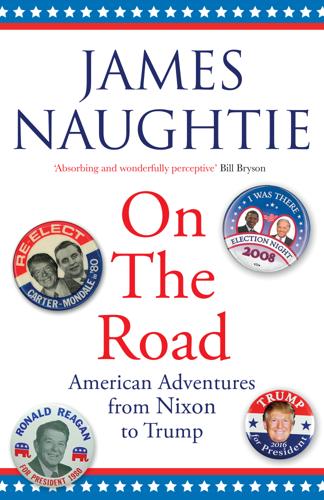
On the Road: Adventures From Nixon to Trump
by
James Naughtie
Published 1 Apr 2020
But that alliance produced a burgeoning conservative movement that had more ideological confidence, and much more money, than ever before. One administrative act at the end of the Reagan years catches the flavour, a ruling that harked back to an age long gone and changed the country more profoundly than most people predicted at the time. In 1987, the Federal Communications Commission abolished the ‘fairness doctrine’ that had applied since the 1940s to the licensing of broadcasting organisations, putting an obligation on them to air different points of view on matters of public importance and to give them an equally fair hearing. It did not lay down rigid rules about how balance should be achieved – giving equal time to opposing arguments, for example – but simply put a duty on broadcasters to serve the public interest by striving for fairness in their output.
…
Wesley, 153 climate change, 196, 208–9, 214, 220, 276 Clinton, Bill, 101–6, 109, 113, 119, 123, 128, 130, 131, 162, 165, 166, 168, 169, 177, 182, 185, 190, 214, 215, 254, 256–7, 262, 264 becomes POTUS, 97, 114, 260–1 Bush W.’s battles with, 125 as ‘the comeback kid’, 102 and government shutdown, 119 healthcare reform pursued by, 116 impeachment trial of, 119–20, 124 infidelities surrounding, 102, 119–24 as Rhodes scholar, 104 sexual harassment claims against, 102, 119 Clinton, Chelsea, 131, 214 Clinton, Hillary Rodham, 102, 103, 120, 157, 161, 162–8, 181, 182, 185–92, 197, 208, 209, 214, 231, 241, 276, 280, 290 healthcare reform pursued by, 116 Naughtie interviews, 253–66 popular vote won by, 263 as Secretary of State, 255–8 2016 election campaign, 183, 210–11, 255–6 CNN, 121 Cohen, Michael, 197 Cold War, 4, 84, 92–8, 113, 150 Cole, Thomas, 14 Collins, Kate, 270, 277 Comey, James, 188–9, 190, 209, 254 compassionate conservatism, 125, 273 Condon, Alexis, 113, 172 Condon, Eddie, 75 Connally, John B., 48–9 Connery, Sean, 49 Connor, Bull, 265 Conscience of a Conservative, The (Goldwater), 97 Conservative Political Action Conference (2019), 195 conspiracy theory, 184–5, 215, 219, 262, 291 ‘Contract with America’, 118, 119 Cook County Jail, 80 Cook Library, 135 Cooke, Alistair, vi, 26, 280–1 Corbett, Jasper, 175 Corera, Gordon, 122 Cornyn, John, 278 Country Club Republicanism, 54, 119 Countryman, Tom, 203–4 Cox, Archibald, 35, 52 CPAC, 197–8 CREEP, 57 Crouse, Tim, 87 Cruz, Rafael, 179 Cruz, Ted, 178, 179, 197, 198, 267, 269–70, 272 culture wars, 104, 119, 176, 262, 271, 276, 280 cummings, e. e., 139 Cummings, Elijah, 123 Cuomo, Mario, 91 Custor, Peg, 137 DACA programme, 287–8 Daley, Richard, 65, 66–7, 124, 130, 248 Daniels, Stormy, 198 Dave (student), 24 Day, Robin, 75 Dean, Howard, 152 Dean, John, 39, 51, 52 Declaration of Independence, 64, 263 Deep Throat, 57–8 deficit reduction, 114 Democrats for Nixon, 49 Desert Storm, Operation, 110 determination, 35, 57, 96, 141, 280, 293 Detroit Free Press, 55–6 Dickinson, Jim, 247 Dillinger, John, 248 Dobson, Kevin, 68–9 Dole, Bob, 119 Drucker, Nancy, 74 Duncan, Rudy, 46 Dylan, Bob, 64 editorial comment, 55, 80 ‘Education of David Stockman, The’ (Greider), 82 Edwards, John, 163–4 Ehrlichman, John, 42, 52 Eisenhower, Dwight D., 40, 98, 121, 219 embedding reporters, 111 Ervin, Sam, 40, 41–2 espionage, 92–3, 93, 96 Esposito, ‘Diamond Joe’, 248 exit polls, 114, 125, 153 ‘expletive deleted’, 53, 54 fairness doctrine, 99 fake news, 54, 185, 196, 198, 214, 251–2 Falk, Peter, 46 Falklands War, 84–5 Fallows, James, 202–3 Falwell, Jerry, 99 Farage, Nigel, 197 fascism, 35, 216, 217, 283 FBI, 58, 161, 181, 182, 188–9, 190, 194, 254 Felt, Mark, 58 financial crashes, 29, 49, 109, 158–9, 257 First World War, 110, 163 Fisher, Ken, 46 Fitzgerald, F.

The Future of Ideas: The Fate of the Commons in a Connected World
by
Lawrence Lessig
Published 14 Jul 2001
Lessons from FCC Regulation of Radio Broadcasting,” Michigan Telecommunications & Technology Law Review 4 (1997-98): 35; Hazlett, “Physical Scarcity, Rent Seeking, and the First Amendment,” Columbia Law Review 97 (1997): 905; Hazlett, “Assigning Property Rights to Radio Spectrum Users: Why Did FCC License Auctions Take 67 Years?,” Journal of Law & Economics 41 (1998): 529; Hazlett, “Spectrum Flash Dance: Eli Noam's Proposal for 'Open Access' to Radio Waves,” Journal of Law & Economics 41 (1998): 805; Hazlett and Sosa, “Was the Fairness Doctrine a 'Chilling Effect'? Evidence from the Postderegulation Radio Market,” Journal of Legal Studies 26 (1997): 279; Hazlett, “The Rationality of U.S. Regulation of the Broadcast Spectrum,” Journal of Law & Economics 23 (1990): 133. 17 See, e.g., Hazlett, “Spectrum Flash Dance,” 816. (“Profit maximization will force competitive band managers to devise better technical means to increase wireless communications traffic.”) 18 The source of the skepticism is traced, as Yochai Benkler describes, to Claude E.
…
The statute initially set up a Copyright Royalty Tribunal, but that was abolished in favor of private negotiation in 1993. See Robert P. Merges, Peter S. Menell, and Mark A. Lemley, Intellectual Property in the New Technological Age, 2nd ed. (Gaithersburg: Aspen Law & Business, 2000), 481. Congress initially tried to balance this effective control by establishing rules of access such as the “Fairness Doctrine.” See Jerry Kang, Communications Law and Policy: Cases and Materials (Gaithersburg, Md.: Aspen Law & Business, 2001), 85-86. These rules have been drawn into constitutional doubt—see, for example, Miami Herald Publishing Co. v. Tornillo, 418 U.S. 241 (1974), Huddy v. FCC, 236 F.3d 720, 723 (D.C.
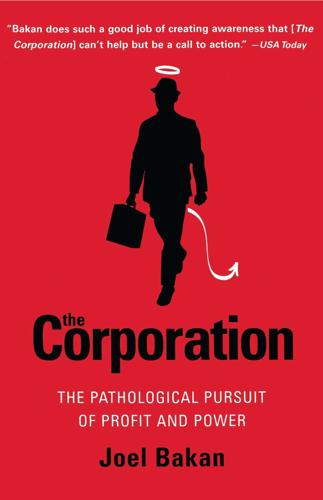
The Corporation: The Pathological Pursuit of Profit and Power
by
Joel Bakan
Published 1 Jan 2003
That, in turn, "destroy[s] any special basis for state regulation of the corporation that derive[s] from its creation by the state," as historian Morton Horwitz describes the ideological effects of the natural entity theory." The New Dealers understood this. They knew that the natural entity theory and related laissez-faire doctrines undermined the legitimacy of regulations designed to promote the public interest. So they discarded those ideas and revived earlier conceptions of corporations and markets as creations of government. "The freedom from regulation postulated by laissez-faire adherents is demonstrably nonexistent and virtually inconceivable," wrote one New Deal supporter in 1935.
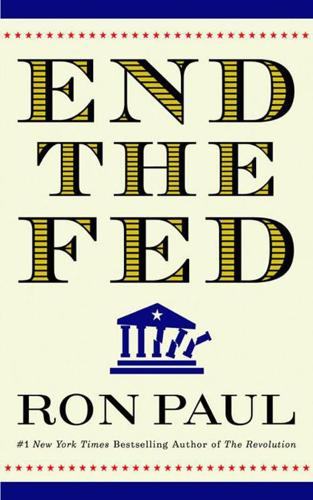
End the Fed
by
Ron Paul
Published 5 Feb 2011
By the 1940s, the Indian Head penny had long since left circulation. There were 986 pennies in the can as I recall. I would scan them and sort them, and I knew exactly which pennies were there. Although it was obvious that I was the most interested of the five brothers in coin collecting, there was no way that those pennies would become mine because of the fairness doctrine of our parents—“no special favors.” I saved my money, and when I had $20, I negotiated a deal with my dad: $20 for 986 pennies. It was a big transaction for me, but only I knew that buried in that can was a 1909-S in good condition, which even then made the purchase a great deal. I still have that particular penny and most of the other 985.
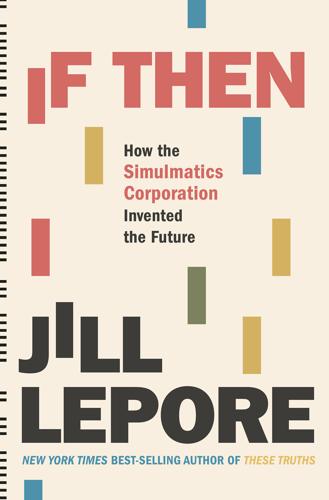
If Then: How Simulmatics Corporation Invented the Future
by
Jill Lepore
Published 14 Sep 2020
“New technology is allowing the editors of mass media to tailor their contents to the interest of small specialized audiences,” he wrote in the early 1980s, two decades before other observers would first notice this trend. Networking computer networks, he predicted, would produce “communities without boundaries.”50 He also advocated the abolition of the FCC’s Fairness Doctrine (critiqued by conservatives as unduly suppressing conservative political views). And he argued against government regulation of what would become the Internet. “Communications policy in the United States most seriously lost its way” in the 1920s, Pool argued in his award-winning 1983 book, Technologies of Freedom: On Free Speech in an Electronic Age.
…
— arms race and reaction to Sputnik, 77–78 — BBDO and, 20 — Civil Rights Act (1957), 75–76 — Cornflakes Campaign, 20, 44, 65 — Cuban Missile Crisis, 160 — farewell address, 134 — heart attack, 41, 65 — on McCarthyism, 34 — “New Look” defense strategy, 57 — political advertising, 18, 20, 21–22 — presidential election of 1952, 16–17, 20, 21–22, 24–25 — presidential election of 1956, 41–43, 65–66, 103 — presidential election of 1960 and, 102 — reading The Ugly American, 101 — speaking style, 19 Ellison, Ralph, 186 Ellsberg, Daniel — at march on the Pentagon, 253 — at MIT, 294, 295 — Pentagon Papers indictment, 330 — Pentagon Papers leaked by, 245, 294, 305 — Pentagon Papers mistrial, 310 — Pool friendship with, 230, 231 — Popkin as neighbor, 294, 306 — at RAND, 219, 291, 294, 305 — report on U.S. involvement in Vietnam and, 291, 305 — in Vietnam, 219, 230, 231 e-mail invention, 172 Emerging Republican Majority, The (Phillips), 274 Emery, Charles (Chuck), 81, 84, 87 Emery, Jane (Janey) Aycrigg, 84–85, 86, 87, 88–89 “Emphasis upon Complexity Should Be Minimized, The” (Burdick), 46, 342nn ENIAC (Electronic Numerical Integrator and Computer), 68–69 Entertainment Corporation of America (ECA), 173, 175 Epstein, Jeffrey, 326 Equality of Educational Opportunity (Coleman Report), 259, 303 ExComm (Executive Committee of the National Security Council), 157, 162 Faber, Harold, 154–55, 164–65, 166, 167–68, 362n Facebook, 4, 62, 282, 304, 319, 324, 327 Fadiman, Clifton, 157 Fail-Safe (Burdick, Wheeler), 148, 157, 158–60, 162, 163, 173, 174, 364n Fail Safe (film), 173, 174, 175, 361n, 364n Fair Deal, 17, 108 Fair Housing Act, 280 Farmer, James, 263 Fascell, Dante, 211 Fassbinder, Rainer Werner, 4 Faubus, Orval, 75 Federal Communications Commission (FCC) — Communications Act of 1934 and, 23, 316 — Fairness Doctrine, 316 — Minow as chairman, 93, 137, 303–4 — no safeguards on data collection and analysis, 315 — on political advertising on TV in 1952, 23 Federal Data Banks, Computers, and the Bill of Rights, 305 Feminine Mystique, The (Friedan), 82, 238 Finletter, Thomas K., 103 Fire in the Lake (FitzGerald), 218 FitzGerald, Frances, 217–18, 228, 239, 241–42, 243–44, 277 Fonda, Henry, 63, 173 Ford, Edsel, 35 Ford, Henry, II, 35 Ford Foundation, 35–36, 58, 86–87, 89, 289, 340n foreign aid, 59–60 FORTRAN, 2, 67, 70–71, 144, 214 480, The (Burdick) — ad copy for, 176 — on behavioral science, 36–37 — McGraw-Hill and, 183, 186, 187–88, 190, 366n — movie rights, 183, 365n — overview, 184–85, 189–90 — people in underworld, 7, 188 — publication and promotion of, 175, 183, 186, 189, 190, 194, 198, 366nn — reviews of, 190–92 — Saturday Evening Post serial, 188, 190, 366n — Simulations Enterprises, 4–5 — Simulmatics and, 4 — Simulmatics cooperation with project, 184–85, 187 France in Indochina, 60 Franklin, Benjamin, 72 Frayn, Michael, 97 Freedom Summer, 192, 234 Free Speech Movement, 196, 197–98, 199, 210, 234, 255 Friedan, Betty, 82, 238 Friedman, Milton, 308 Friedman, Saul, 306 Frost, Robert, 135 Fulbright, J.
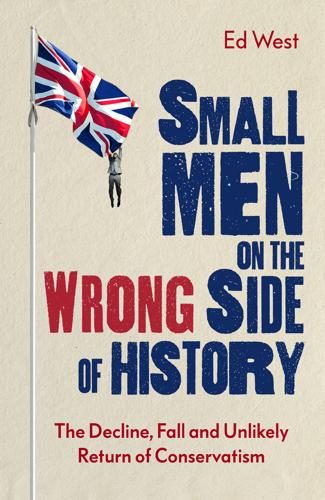
Small Men on the Wrong Side of History: The Decline, Fall and Unlikely Return of Conservatism
by
Ed West
Published 19 Mar 2020
Analysis becomes propaganda and people are increasingly only exposed to the most crazed and extreme members of the opposing tribe. And because it’s all an insane shouting match the only way to get noticed is to be more insane and shoutier than the next person. The break-up first began in 1987 with the US Federal Communications Commission’s abandonment of the ‘Fairness Doctrine’, which meant radio stations no longer had to maintain impartiality. This heralded the rise of shock-jocks, most of them Right-wing, of which Rush Limbaugh was the most high-profile. Limbaugh was an inspiration for 1995 culture war black comedy The Last Supper, in which a group of progressive housemates invite around conservatives and murder them.
…
K. 69, 210, 265 Chick-fil-A 228–9 child abuse scandals 218, 232 child-rearing 242–7, 250–1 children, indoctrination 256–64 children’s stories 261 China 97, 139, 226–7, 230 Chindamo, Learco 122 Chinese Revolution 256 chlamydia 168 Chown, Marcus 197 Christian Judeaophobia 88 Christian saints 105–6 Christian socialists 240 Christian-run colleges 145–6, 152 Christianity 2, 4, 12, 54, 95, 100, 173, 208, 211, 215–23, 225, 227–9, 229, 264, 275–7, 280, 289, 291–3, 361, 366, 373 and charities 199–200, 202 evangelical 86, 219–20, 243, 338–9 and gender bias 254–5 and human nature 261 ‘Judaising’ 64 and the Left 19 and Marx 93 national 97 norms 79 and original sin 28 Roman 254, 275–6 traditional 167, 219 Western division 48 and women 6 see also Anglicanism; Catholicism; Protestantism; Puritans Christianity 2.0 328 Church 31–2, 37, 60, 64, 66–7, 75, 188, 189, 190, 193, 200, 271 Church of England 49, 50, 64, 145, 197, 202, 211, 212, 220, 222, 289 monarch as the head of 48, 291 churchgoing 211–12, 213–14 Churchill, Winston 82, 106, 161, 196, 274 CIA see Central Intelligence Agency Cincinnatus 328 Cirta 254 City of London 164, 165, 189, 200, 281 civil society 197 civilising process 143, 255 Clarence, Thomas 308 Clark, Alan 157–8 Clark, Kenneth 370 Clarkson, Jeremy 87 Clash 101 class interests 9 Clemenceau, Georges 274 clickbait 343 Clinton, Bill 153, 154, 155–6, 313 Clinton, Hilary 247, 249, 338–9, 340, 363 Clinton era 155 Clooney, George 23, 24, 25, 288 Clovis 254 CND see Campaign for Nuclear Disarmament CNN 297, 314 Cocoa Tree coffee house, Pall Mall 51 Coe, Jonathan 267 Cohen, Geoffrey 294 Cohen, Stanley 34 Cold War 15, 21, 31 Coleridge, Samuel Taylor 55, 78–9, 91–2, 279 collectivism 93 Collot d’Herbois, Jean-Marie 60 comedians 190–2, 265 comedy 331–3 communism 14, 15, 17, 20–1, 80, 93–6, 98, 100, 126, 128, 143–5, 198, 226, 228, 268, 334 fall of 15, 153 see also anti-communism Communist Party of Great Britain (Marxist-Leninist) 244 Communist Party of Great Britain (Provincial Central Committee) 244 Conan the Barbarian 12 Condorcet, Marquis de 239 Congress 300 Conquest, Robert, Three Laws of Politics 198–9, 201, 202 conscientiousness 108 Conservative government 17–18 see also Tory government Conservative Party 1–2, 5, 23, 50, 65, 79, 209, 234, 267, 283 establishment 77 post-Thatcher 280 victory 1992 103 Constantine, Emperor 276 Constantinople 291 constitutions American 345 English 159 Continental Congress 56 Contras 14 Cool Britannia 156 Cooper, Alice 24 Cooper, Gary 161 Coppen, Luke 212 Corbyn, Jeremy 3, 234, 235 Corn Laws 77, 155 Corrigan, Mark 20, 125 Costner, Kevin 131 Council for the Encouragement of Music and the Arts 197 council housing 176 Counter Reformation 45, 48 Cox, Jo 367–8 crime 84–5, 118–23, 153–4, 163, 181 see also homicide critical theory 135 Croker, John Wilson 77 Cromwell, Oliver 49 Crown, The (TV show) 161–2 Cultural Marxism 103–4, 127 cultural relativism 134 culture wars 31, 86, 100, 124, 154–6, 173, 201–2, 212, 214, 218, 226, 228, 253, 257, 266, 284, 292, 308, 311–13, 342–3, 359–60 ‘Culture Wars’ (blog) 244–5 Cumberbatch, Benedict 10 curat Deus injuria Dei 288 Cyrus, Miley 358 Czechoslovakia 15 Da Vinci Code, The (film, 2006) 213 Dafoe, Willem 110 Daily Express (newspaper) 157, 161, 310–11 Daily Mail (newspaper) 83–4, 87–8, 103, 118–19, 122, 142, 151, 157, 183, 190, 246, 285, 331, 332–3 Daily Telegraph (newspaper) 2, 3, 83, 104, 157, 162, 187, 213, 232, 244–5, 266, 269, 282, 307–8, 315–16 Daley, Janet 46 Dalrymple, Theodore 144, 145, 162–3 Damon, Matt 24 Dance, Charles 235 Dances with Wolves (1991) 131 Danton, Georges 60 Dark Ages 4 Darwin, Charles 148, 350 Davy, Humphry 91 Dawkins, Richard 215, 218, 264, 339 The Blind Watchmaker 72, 164 DDR see German Democratic Republic de Beauvoir, Simone 139 de Maistre, Joseph 67, 89–90, 94, 97, 116, 119 de Montaigne, Michel 373 De Niro, Robert 24, 358 de Rais, Gilles 186 de Tocqueville, Alexis 226 de Tracy, Antoine 221 de Warens, Mme 39–40 Deacon, Joey 141 Dean, James 341 Death Wish (1974) 185 Delingpole, James 307–9 democracy 17, 336, 355, 362 Democrats 5, 7, 51, 73, 112, 117, 224, 237–8, 247–8, 252, 274, 294–5, 297, 300–3, 305, 313, 319–20, 324, 326, 329, 339, 346–7, 360, 363 demos 31 Demos (think tank) 111 Denmark 351 Department of Work and Pensions 204 D’Épinay, Madame 39 Depression 115 depressive realism 30 Derbyshire, John 243 Derry, Lord 159 di Lampedusa, Giuseppe Tomasi, The Leopard 158–9 Diana, Princess 160–1, 310–11 DiCaprio, Leonardo 24 Dickens, Charles 174 Diderot, Denis 213 Dion, Céline 362 ‘dirt gap’ 247 Dirty Harry series 181 disability discrimination 141–2 discrimination 141–2, 304–5 Disraeli, Benjamin 53, 76, 77, 155, 274 Dissenters 50, 51, 52, 57, 61, 211, 293 Divine Right of Kings 50, 67 divorce 166 Dorsey, Jack 228–9 Douglas, Michael 22 DRD4 gene 349 Dre, Dr 122–3 dreams 180 Drebin, Frank 22 Dreger, Alice 328 Dreher, Rod 279, 373 Driscoll, Bill 335 Drop the Dead Donkey (TV show) 194 Drummond, Henry 279 Dufresne, Todd 139 Durkheim, Émile 78, 173, 225 Dworkin, Andrea 170 Dylan, Bob 24, 274 East Germany 15, 268 see also German Democratic Republic eastern Europe 15, 211 Eastwood, Clint 24 Eazy-E 122–3 Ecclestone, Christopher 24, 185 economic deregulation 153 economics 126–7 Economist (magazine) 3, 246, 355 Edexcel 262–3 education 175, 262–3 see also higher education; schools ‘education effect’ 250 educational philosophy 41–3 Edward VI 48 Efteling 339 Eich, Brendan 289 Einsatzgruppen 303 Ekman, Paul 146 ‘Elect’ 64 Electronic Frontier Foundation 290 Elias, Norbert 143 Elizabeth I 48–9, 291 Elizabeth II 161, 293, 331 empiricism 52 Enfield, Harry 208 Engels, Friedrich 173–4, 224 English Civil War 36, 49, 51, 64, 211, 326 English constitution 159 Enlightenment 222, 228, 229, 288 environmental movement 225, 284–6 envy, politics of 281 Episcopalians 115, 145 epistemological modesty 73–4 Equality Act (2006/2010) 199, 217–18, 289 eschatology 227 establishment, the 9–10, 56 Ethelbert of Kent 254 Eton 47 eugenics 139 Euripides 187 Europe 12 eastern 15, 211 European Union (EU) 353–8 referendum (2016) 3, 173, 222, 270, 275, 302, 354–5, 357, 359 Euroscepticism 353–4, 355 Eve 33, 219 Eve, Lady Balfour 284 Everyone Says I Love You (1996) 102 evolution 72 extroversion 108 F (Fascism) Scale 195 FA Cup 193 Fabians 80, 96 Facebook 4, 19–20, 26, 103, 174, 219, 237–8, 296–7, 298–300, 311, 343, 354 ‘Fairness Doctrine’ 312 faith schools 137 Falklands War 194 Falling Down (1993) 22, 185 Family Planning Association 241 Farage, Nigel 309, 355 fascism 94–7, 179 Fascism (F) Scale 195 Father Ted (TV show) 1, 186, 232 Fawlty, Basil 192, 205, 331 fear 113, 115–22 Federal Communications Commission 312 Feiling, Keith 69–70 femininities 114, 136 feminism 170–1 fertility rates 362–4 Festival of Reason 1793 228 FHM (magazine) 169 film 184–5 Financial Times (newspaper) 3, 355 Finland 351 First World War 176–7, 180, 196, 209 Fitzwilliam, Lord 62 Food Standards Agency 203 Four Lions (2010) 185 Fourth Reich 229 Fox 313–14 Fox, Charles James 55, 56, 81 Fox News 5, 194, 313 France 52, 72, 210–11, 261, 358–9 Francis, Pope 24 Franco, Francisco 14, 178–9 Frank, Thomas 115, 155 Frankfurt School 103–4, 126, 245 Franks 254 Free French 211 free market 96, 97, 280, 364–5 free speech 324, 325 freedom, inability to handle 133 Freemasons 197 French Republic 210 French Revolution 46–7, 55–6, 58–61, 69, 72, 81, 89–90, 167, 181, 216–17, 221 Frenkel–Brunswik, Else 105 Freud, Sigmund 104, 109, 138–9 Freudian theory 104–5, 138 Friedman, Milton 204 Friendly Societies 197 Friends of Abe 185–6 Fromm, Erich 105 Frum, David 280 Fry, Stephen 195 Galileo Galilei 350 Gallup polls 302 Garnett, Alf 192 Gaskell, Peter 174 Gatiss, Mark 309 Gay Pride 219, 229 Gellner, Ernest 136 gender equality 73, 129, 140, 170–1 pay gap 73, 246 performative nature 136, 139–40 traditional norms 246 gender studies 136–7 Generation X 2, 221 Genet, Jean 121 genetics 138–40 Gentile, Giovanni 95 gentry 9 geographical segregation 295–6 German Democratic Republic (DDR) 20–1, 373 see also East Germany Germany 95, 103–5, 295, 303, 366–7, 372–3 and the First World War 176–7 Nazi 139, 205, 246, 329 Gerson, Jean 33 Gibson, Mel 24, 130 Gibson, William 345 Gilbert, W.S. 101 Gingrich, Newt 270 Girondins 59–60 Gissing, George 242, 367 Giuliani, Rudy 42 GLC see Greater London Council globalisation 78 Glorious Revolution 52 God 45, 50, 56, 57, 64, 67, 69, 90, 97, 130, 188, 215, 219, 223, 288 God Squad 215 Godwin, William 61, 239 Goldberg, Jonah 96, 230 Goldberg, Whoopi 24 ‘golden-age’ myth 172–3, 176, 177 Goldman, Lisa 187 Gollancz, Victor 81 Goodfellas (1990) 123 Goodhart, David 46–7 Google 4, 339 Gore, Al 313 Gorky, Maxim 182 Gottfried, Paul 345 Gramsci, Antonio 126–7 Gray, John 280 ‘Great Awakening’ 9, 273, 329 ‘Great Awokening’ 329–30, 333, 335, 348 Great Realignment 365 Greater London Council (GLC) 20 Green Party 8, 232 Greene, Graham 166 Greene, Sir Hugh Carleton 165, 166 Griffin, Nick 87 Guardian (newspaper) 3, 11, 17, 27, 38, 83, 115, 169, 213, 232, 241, 244, 260, 270, 278–9, 296, 302, 308, 315, 331, 355 Guevara, Che 21, 25, 100 guillotine 60 Gulags 145, 240, 290 Gule, Lars 236 Guthrie, Woody 24 Hague, William 102 Haidt, Jonathan 184, 311 Hamid, Shadi 240 Hamilton, William 147 Hammond, Barbara 174 Hammond, John Lawrence 174 Handmaid’s Tale, The (1985) 168, 183 Hanks, Tom 24 Hare, David 189 Haringey Council 268–9 Harlesden 47 Harman, Harriet 217 Harris, John 310 Harvard 145, 146–7 Hawley, George 248 Heathers (1989) 112 ‘hegemonic degeneration’ 342 Heineken 4–5 help-to-buy scheme 247 Hemingway, Ernest 186 Henri IV 47 Henry, Lenny 193 Henry VIII 11, 48 as head of the Church of England 48 heresy 12, 37, 221, 254, 326 Herrnstein, Richard 146–7, 148 Heston, Charlton 24 higher education, expansion 136, 138 historical consequentialism 66–7 historical utilitarianism 67 Hitchens, Christopher 370 God is Not Great 214 Hitchens, Peter 46, 126, 161, 192, 273, 285 Hitler, Adolf 97–8, 99, 103, 106, 117, 236, 246, 303, 373 Hitler Youth 218 HM Revenue & Customs 204 Hobbes, Thomas 36–7, 42, 113, 326 Leviathan 36–7 Hobsbawm, Eric 80 Holland, Lady 81 Holland, Lord 81 Holland, Tom 271 Holland House 81 Hollywood 184–6 Holocaust 100 Holy Land 362 homicide 69, 84–5, 119, 122, 131, 163, 181 homophobia 28, 273, 280, 291 homosexuality 9, 16, 166, 184, 216–19, 222–3, 228–9, 272–3 see also same-sex marriage Honeyford, Ray 17 Hopkins, Katie 11 ‘horseshoe’ theory 96 Houellebecq, Michel, Submission (2015) 261 House of Commons 50, 55 House of Lords 159 house prices 125, 247, 248 House of Representatives 300 housing 175–6 Howard, Michael 163 Hugo, Victor 274 Hulk Hogan 195 human nature 54, 69–70, 105, 120, 130, 138–40, 231–2, 365–6 as ‘blank slate’ 138, 140 and children’s stories 261 Unconstrained Vision 130 human rights legislation 205 humanitarianism 74 Hume, David 38, 50, 129, 224 Humphreys, Nicholas 218 Hungarian Uprising 1956 80 Hungary 198 Hunter, James Davison 154 hunter-gatherers 131 Huxley, Aldous 148 hypocrisy 81, 86, 173, 189, 231–2 Ibsen, Henrik 188 identarians 345 identity politics 4, 9, 12, 117, 129, 317, 343 Ideological Turing Test 275 IMF see International Monetary Fund immigration 131, 164, 189, 194–5, 208, 367–8 ‘implicit bias’ 350–1 Independent (newspaper) 169, 207 individualism 283–4, 352 Industrial Revolution 75, 77–8, 174 Industrialisation 78 InfoWars 340 Inner London Education Authority (ILEA) 18–19 Inner London Teachers’ Association (ILTA) 19 Innocent III, Pope 33 Institute of Fiscal Studies 266 intelligentsia 12, 15 International Monetary Fund (IMF) 79 internationalism 97 Internet 298 intolerance 326–7 Inuit 131 IPC media 169 IRA see Irish Republican Army Iran 292 Iraq War 189, 201 Irish hunger strikes 201 Irish Republican Army (IRA) 367 ISIS 27, 43, 367 Islam 172–3, 190, 238–9, 339, 367–8 see also Muslims Islamic extremism 190 Islamic terrorism 115, 136, 367–8 Islamists, radical 27, 65–6 Israel 236, 300, 362 It’s a Wonderful Life (1946) 123–4, 287 Ivins, Molly 155 Jacobins 59, 60 Jahiliyyah (‘Age of Ignorance’) 173, 177 James I 49 James II 52 Jansenism 45 Jefferson, Thomas 53, 61, 109, 206–7 Jeffreys, Henry 259 Jensen, Arthur 147 Jeremiah 34–5 Jesuits 261 Jesus 56, 64, 215, 229 Jewish Tanakh 294 Jews 57, 88, 89, 95, 117, 294, 362, 366 see also Judaism Jindal, Bobby 10 job discrimination 12 Johansson, Scarlett 24 Johnson, Boris 1, 270 Johnson, Paul 46, 121, 181, 188, 273 Johnson, Samuel, Dictionary (1755) 64 Jones, Bridget 11, 25 Jones, Owen 26, 235–6 Jost, John 334–5 journalism 11, 316–17 Journey’s End (play) 180 Judaism 93 see also Jews Julian the Apostate 276 Justinian 291 Kael, Pauline 336 Kahneman, Daniel 29 Kant, Immanuel 69 Kassam, Raheem 309 Kelling, George L. 69 Kelly-Woessner, April 326–7 Kemp, Peter 14 Kennedy, John F. 24, 158, 178 Kennedy, Robert 178 Kennet, Baron 42 Kerr, Judith, The Tiger Who Came to Tea 258 King, Martin Luther 24, 85, 131, 178, 214, 227 King, Stephen 106, 242 Kinnock, Neil 82 Kirk, Russell 68, 91, 286–7, 362, 365 Knox, John 335 Koch Foundation 233 Koran 66 Kristol, Irving 120 Ku Klux Klan 193 Kutcher, Ashton 311 Labour government 163–5, 164, 175, 208, 217 post-war 47 Labour MPs 235–6 Labour Party 5, 18–19, 166, 226, 234–5, 250, 265, 267–9, 271–2, 367 and academia 8 centrist tendencies 21 and Clause 4 153 image 11 and personality types 108–9 and women 6 Lady Gaga 358 Lakoff, George 111 Lammy, David 186 Lasch, Christopher 132, 231 L’Aurore (newspaper) 132 law making 70 Lawrence, D.H., Lady Chatterley’s Lover 166 Lawrence, Philip 122 Laws, David 266 Lawson, Nigel 230 Le Chatelier 271 Le Conservateur (journal) 63 learning, ‘child-centred’ 41 Leave faction 238, 243–4, 322, 354, 355–7 Lee, Laurie 179 Lee, Stewart 191–2 Lego Movie, The (2014) 259 Legutko, Ryszard 228 Lehrer, Tom 178 Lennon, John 24, 186 Levasseur, Thérèse 40 Levin, Yuval 59, 71 Lewis, C.
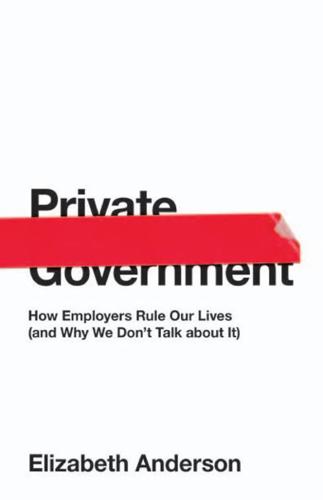
Private Government: How Employers Rule Our Lives (And Why We Don't Talk About It)
by
Elizabeth S. Anderson
Published 22 May 2017
Yet the Industrial Revolution effected a great reversal in the expected outcomes of a broadly free market regime. The ideology that arose to rationalize these outcomes ignored most of the criteria my early thinkers used to evaluate markets. Hence, to grasp what my early pro-market thinkers believed, we must take care not to project mid- to late-nineteenth-century laissez-faire doctrine on to them. With these precautions in mind, let us consider the comments of Ann Hughes and David Bromwich. Hughes and Bromwich stress that, while the rise of market society improved the condition of many masterless men in the seventeenth and eighteenth centuries, it delivered miserable poverty and desperate insecurity to many others.
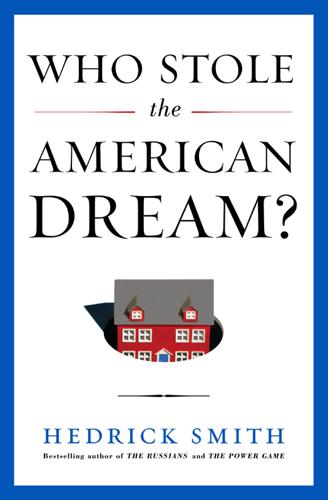
Who Stole the American Dream?
by
Hedrick Smith
Published 10 Sep 2012
In the 1994 congressional elections, Gingrich and the New Right hit the jackpot—seventy-three new Republicans to give the GOP the House majority for the first time in forty years. Gingrich could not have done it without talk radio, especially right-wing commentator Rush Limbaugh. Sharply partisan talk radio had shot up since the Federal Communications Commission in 1987 repealed “the Fairness Doctrine,” which previously required broadcasters to balance opposing political views. According to Republican pollster Frank Luntz, people who listened to ten or more hours of talk radio a week voted 3 to 1 for Republicans in 1994. Gingrich’s freshmen understood Limbaugh’s importance. They lionized him when he spoke at their freshmen orientation.
…
Rosenbaum, “Clinton Wins Approval of His Budget Plan as Gore Votes to Break Senate Deadlock,” The New York Times, August 7, 1993. 35 More than half the bills (56 percent) died Binder, “Dynamics of Legislative Gridlock.” 36 Least productive sessions in half a century Ibid. 37 “Perhaps the worst congress” “Perhaps the Worst Congress,” The Washington Post, October 7, 1994. 38 To generate public disgust with Congress Ornstein, interview, January 7, 2010. 39 Right-wing commentator Rush Limbaugh “F.C.C. Votes Down Fairness Doctrine in a 4–0 Decision,” The New York Times, August 5, 1987. 40 Pollster Frank Luntz “Call-in Political Talk Radio: Background, Content, Audiences, Portrayal in Mainstream Media” (Philadelphia: Annenberg Public Policy Center, University of Pennsylvania, August 7, 1996), http://www.annenbergpublicpolicycenter.org; U.S.

The Nation City: Why Mayors Are Now Running the World
by
Rahm Emanuel
Published 25 Feb 2020
As James Fallows of The Atlantic has pointed out, this has left our electorate in a strange place, where poor white voters in, say, Kansas or West Virginia “support tax policies that disproportionally support financiers in New York and San Francisco.” From that point on, the issues with the federal government began to snowball. Reagan’s Federal Communications Commission chairman revoked what’s known as the fairness doctrine in broadcasting, a policy that had been put in place in 1949 that guaranteed the airing of different views on issues of significant public interest. Revoking this doctrine led to the rise of Fox News and the Sinclair Broadcast Group (the largest owner of television stations in the U.S.), both of which have capitalized on the moneymaking opportunities presented by airing harshly partisan news on the Republican side.

Internet for the People: The Fight for Our Digital Future
by
Ben Tarnoff
Published 13 Jun 2022
“Building systems …”: Joan Donovan, “Hire 10,000 Librarians for the Internet,” in Julia Carrie Wong, “Banning Trump Won’t Fix Social Media: 10 Ideas to Rebuild Our Broken Internet—by Experts,” Guardian, January 16, 2021. 161, The problems that librarians … “Profit motives drive …”: Victor Pickard, Democracy without Journalism? Confronting the Misinformation Society (Oxford: Oxford University Press, 2019), 11. The death of the Fairness Doctrine at the hands of the Reagan administration in 1987 proved to be an especially useful deregulatory move for right-wing media; see Kevin M. Kruse and Julian Zelizer, “How Policy Decisions Spawned Today’s Hyperpolarized Media,” Washington Post, January 17, 2019. Donor-subsidized right-wing sites: Alex Pareene, “Liberals Are Losing the Journalism Wars,” New Republic, October 21, 2020. 161, Commercial media’s failings … “Permanent trust …”: Pickard, Democracy without Journalism?

Termites of the State: Why Complexity Leads to Inequality
by
Vito Tanzi
Published 28 Dec 2017
For example, writing in 1929, months before the stock market crashed, the Swedish economist Myrdal could state that “a very uncompromising Age of Laissez-Faire 21 laissez-faire doctrine dominated the teaching of economics in Sweden” (published in Myrdal, 1954, p. vi). The same was true of the economics that was taught in the United States, the United Kingdom, and other European countries, even in the 1930s. In 1926 Keynes would write a famous essay that called for “the end of laissez faire.” Ch apter 2 The Economic Role of the State between the World Wars The laissez-faire doctrine that had prevailed in earlier years started to be challenged, in Europe, before and after World War I and, in the United States, especially during the Great Depression, in 1933–1938, when the administration of Franklin D.

The Filter Bubble: What the Internet Is Hiding From You
by
Eli Pariser
Published 11 May 2011
As a result, after we’ve each done our part to pop the filter bubble, and after companies have done what they’re willing to do, there’s probably a need for government oversight to ensure that we control our online tools and not the other way around. In his book Republic.com, Cass Sunstein suggested a kind of “fairness doctrine” for the Internet, in which information aggregators have to expose their audiences to both sides. Though he later changed his mind, the proposal suggests one direction for regulation: Just require curators to behave in a public-oriented way, exposing their readers to diverse lines of argument.
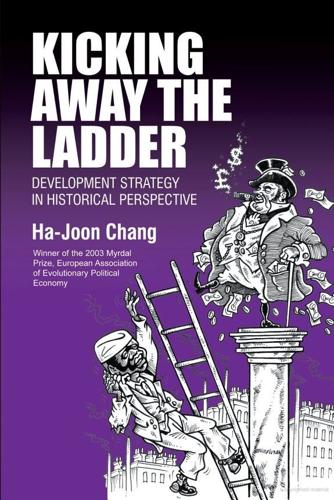
Kicking Awaythe Ladder
by
Ha-Joon Chang
Published 4 Sep 2000
I show that in most of these countries, the policies that were used are almost the opposite of what the present orthodoxy says they employed 'and currently recommends that the currently developing countries should also use'. 2.2.1. Britain As the intellectual fountain of the modern laissez-faire doctrines, and as the only country that can claim to have practised a total free trade at one stage in its history, Britain is widely regarded as having developed without significant state intervention. However, this could not be further from the truth. Britain entered its post-feudal age (thirteenth and fourteenth centuries) as a relatively backward economy.
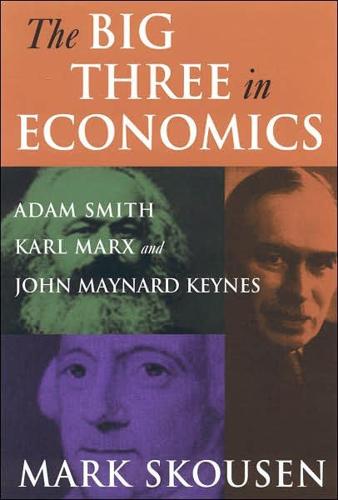
Big Three in Economics: Adam Smith, Karl Marx, and John Maynard Keynes
by
Mark Skousen
Published 22 Dec 2006
Perhaps Keynes had Ricardo in mind when he wrote, "It is astonishing what foolish things one can temporarily believe if one thinks too long alone, particularly in economics" (Keynes 1973a [1936], xxiii). A Defective Classical Model Solidifies Under John Stuart Mill Yet David Ricardo was able to convince practically all his contemporaries of his labor theory of value and his laissez-faire doctrines. "Ricardo conquered England as completely as the Holy Inquisition conquered Spain," said Keynes (1973a [1936], 32). It was principally through John Stuart Mill that the next generation adopted this classical model that was more in line with Ricardo's system of "class conflict" than Adam Smith's upbeat "harmony of interests" model.

The Strange Order of Things: The Biological Roots of Culture
by
Antonio Damasio
Published 6 Feb 2018
When Neil Postman wrote his book Amusing Ourselves to Death: Public Discourse in the Age of Show Business, in 1985, he made an accurate diagnosis, but he had no idea that we would suffer so much before dying.2 The problem has been compounded by the defunding of public education, and the predictable decline of the preparation of citizens, and aggravated, in the case of the United States, by the 1987 repeal of the 1949 Fairness Doctrine that required licensees of the public airwaves to present public affairs in an equitable and honest manner. The result, made more acute by the decline of printed media and the rise and near-complete dominance of digital communication and television, is a profound lack of detailed and nonpartisan knowledge of public affairs coupled with a gradual abandonment of the practices of calm reflection and discernment over facts.

City for Sale: The Transformation of San Francisco
by
Chester W. Hartman
and
Sarah Carnochan
Published 15 Feb 2002
Housing activists in all parts of the state—including the Golden State Mobilehome Owners League—saw their best hope of beating a $6 million propaganda campaign was to seize on the issue of voter manipulation, and accordingly constituted themselves as Californians Against Initiative Fraud. While they could raise only forty-two thousand dollars, they were able to effectively use the Federal Communications Commission’s (since discarded) “fairness doctrine” (a technique profitably used earlier in the Proposition U and Proposition R campaigns) to persuade television and radio stations to give them free air time, in about a 1:4 ratio to the time the realty interests had bought. The group used most of its money to produce some extremely clever and sophisticated thirty-second spots, featuring such icons of integrity as Henry Fonda, Jack Lemmon, and Ralph Nader, which hit squarely on the issue of voter fraud.
…
See environmental impact statement Elberling, John, 70n, 215n, 216, 222, 223, 225, 279, 389, 394 Elevator Construction Workers Union, 30 Ellis Act, 285, 358, 359, 360 El Teatro de la Esperanza, 332 Embarcadero Center, 10, 160, 203, 207, 241, 301, 313 Embarcadero City, 26 Embarcadero Freeway, 293 eminent domain, 8, 15, 16, 105, 168, 175n, 183, 186, 337, 338 employment, 3, 5, 20, 29, 32 – 34, 38, 58, 59, 61, 65, 99, 121 – 23, 125, 135, 145, 169, 17, 182, 188, 190, 199 – 203, 228, 289, 293, 296, 300, 305; and affirmative action, 122, 124, 136, 139, 159, 188, 201; development of, 175, 179, 319, 334n, 390, 393, 399; displacement of, 32, 33, 202, 289, 300, 305, 375, 394, 395 Employment Law Center, 202n Emporium, 17, 44, 202, 230, 273, 324 Energy Foundation, 386 Engmann, Douglas, 138, 139, 141, 145, 417n27 environmental impact report (EIR), 148, 161, 165, 187, 197, 199–201, 281, 291 – 93, 296, 298, 312, 322 – 24, 355, 412n24 environmental impact statement (EIS), 117, 148, 199, 200 Environmental Protection Agency (EPA), 181 Environmental Simulation Laboratory, 291 Equal Employment Opportunity Commission (EEOC), 202n Ethics Commission, 273 Eureka Valley Promotion Association, 417n27 Evans, Arthur, 124, 131, 137, 276, 286 Evenson, Morris, 138, 139 evictions, 66, 79, 82, 84, 272, 328, 329, 339, 345, 346, 352, 356–58, 366, 375, 399 Eviction Defense Network, 332 Excelsior, 235 Facilities Management, Inc., 193 Fairmont Hotel, 11, 12, 24, 26, 27, 31, 44, 159, 204 “fairness doctrine,” 351 Fair Oaks Neighbors, 418n27 Fair Political Practices Commission (California), 281n, 363 Falwell, Jerry, 260n Family Service Agency, 97 Faneuil Hall, 160 Fang family, 40, 41, 42 Fannie Mae Foundation, 221, 401 Farallon Islands Nuclear Waste Dump Site, 181 Fargo, North Dakota, 381 Farrell’s Ice Cream Parlours, 161, 286 Fay, William, 285 Federal Communications Commission (FCC), 351 Federal Emergency Management Agency (FEMA), 221, 379 Federal Housing Administration, 51, 349 Federal Reserve Building, 312 Federated Stores, 324 Feinstein, Dianne, 24, 39, 118, 119, 124, 132, 134, 135, 137–39, 142, 147, 157, 160–62, 166, 167, 169, Index / 473 171 – 73, 183 – 85, 192, 193, 195, 197, 207, 210n, 211, 212, 233, 238 – 41, 243 – 56, 257, 267, 268, 275, 277, 279, 281 – 83, 286, 288, 295, 301 – 3, 310, 313 – 15, 317, 323, 328, 338, 344, 346 – 49, 362, 363, 366, 369, 377, 379, 380, 416n11, 426n64 Feldman, Waldman, and Kline, 285 feminism, 254, 255, 332 Ferndon, John, 130 Ferraro, Geraldine, 212 Ferry Building, 26, 140 Fifth and Mission Garage Corporation, 45 Filipino-American Development Foundation, 222 Filipino-American Employment and Training Center, 332 Filipino Organizing Committee, 138 Filipinos, 59, 139, 218, 219, 221–23, 337 Filipino Veterans of World War II Equity Center, 222 Fillmore Center, 286, 413n2 Fillmore district, 25, 63, 337, 413n2 financial district, 9, 14, 20, 61, 155, 168, 297, 301, 302, 305, 306, 311, 337 financing lawsuits, x, 117 –29 financing plan, 106, 108 –12, 117–19, 128, 142, 143, 146, 149, 150, 201, 294, 301 Fire Department/Commission, 31, 191, 265 Fireman’s Fund Insurance Company, 390 First AME Zion Church, 277 First Interstate Bank of California, 245 First Republic Bank, 5 Fisherman’s Wharf, 26, 28, 202n, 300 Fitzhugh office building, 309 Flack, Jim, 128, 129, 417n27 Flanagan, Sarge, 367 Florida, 175 Flynn, Russell, 344, 348, 351, 353n Folger, James, 19 Folger Coffee Company, 19 Follis, Ralph Gwin, 405n35 Fonda, Henry, 351 Food Conspiracy, 244 Food Not Bombs, 379, 381 Foremost-McKesson, 5, 6, 245, 295 Forest City Development Corp., 160, 273, 324 Fort Mason, 214 Foundation for San Francisco’s Architectural Heritage, 309–11 409 House, 418n27 Four Seas Development Corporation, 337, 338 Four Seasons Hotel, 171 France, Anatole, 378 Francois, Terry, 47, 230, 240, 287 Freedom Summer, 353n Fresno, 263n, 351 Friends of YBC Park, 417n27 Friends of Yerba Buena, 116 Fulton, David, 136, 418n27 Furth, Alan, 184 Gaillardia, John, 168 Gantz, Holger, 378 Gap, 5, 273 Gardner, Dan, 140 Garrett, Duane, 212 Gast, David, 136 gays/lesbians, 134, 135, 179, 226, 232, 235–37, 240, 244, 248, 253, 259, 260, 261, 265, 269, 271, 304, 328, 337, 341, 343, 352, 377 Geary Boulevard, 25 General Assistance, 221, 380 General Atlantic, 301 General Fund, 111, 129, 132, 144, 172, 280, 389 General Motors, 181 General Services Administration, 166–70, 385 General Strike of 1934, 69, 70n Genstar, 5 gentrification, 268, 270, 277n, 327, 328, 330, 331, 382, 390, 397, 398 Georgia, 167 474 / Index Gephardt, Richard, 315n Ghiradelli Square, 300 Gift Mart, 285 Gilbert, Anthony, 417n27 Gilmore, David, 372 Giraudo, Lou, 288 Giuliani, Rudolph, 383 Gladding-McBean and Company, 405n35 Glenburn Hotel, 367 Glickman, Rubin, 162, 286 Global Communications, 386 Golden Gate Bridge, 293, 384 Golden Gate Hotel Association, 369 Golden Gate International Exposition, 388 Golden Gate National Recreation Area (GGNRA), 384, 385, 462n204 Golden Gate Park, 33, 244, 264, 293, 378, 379, 382 – 84 Golden Gate Restaurant Association, 269 Golden Gateway, 8, 10, 17, 19, 33, 54, 55, 63, 107, 123, 207, 241, 280, 349 Golden Seals, 130, 132, 133 Golden State Bancorp, 5 Golden State Mobilehome Owners League, 351 Golden State Warriors, 132 Goldman, Emma, 194 Goldman, Richard, 417n27 Goldstrom, Foster, 196 Gonzales, Robert, 119, 233 Gonzalez, James, 240, 364 Gonzalez, Matt, 274 Goodman Building, x, 127, 128, 132, 136, 137, 334, 337, 339 Goodman 2 Artists’ Live/Work Studio Building and Art Center, 339 Gorbachev Foundation USA, 386 Gore, Albert, Jr., 315n Grace Cathedral, 267n Grafilo, Tony, 138, 139 Grand Hyatt, 24 Grand Southern Hotel, 221 Grant Building, 382 Graves, Cliff, 215n Gray Panthers, 312, 368 Greater San Francisco Association of Realtors, 359 Green Bay Packers, 424n44 Green Party, 255, 274 Gresham, Zane, 301 Griffin, Everett, 17, 19, 25 Griffith, Alice, 374 Grosvenor Properties, 286 Gryziec, Richard, 140, 141, 156–58, 213, 399, 417n27 Guam, 168 Gulf of the Farallones National Marine Sanctuary, 181 Guyana, 238 Hagan, Frank, 79 Haight-Ashbury district, 121, 140, 228, 233, 243, 244, 293, 337, 340, 364, 376, 379, 433n1 Haight-Ashbury Improvement Association, 377 Haight-Ashbury Neighborhood Council, 248 Hall, Tony, 274 Hallinan, Terence, 241, 242n, 353, 381 Hallinan, Vincent, 241 Halprin, Lawrence, 51 Hamilton, Wilbur, 30, 159, 165, 167, 193, 276, 277, 278 Handlery Union Square, 23 Harborplace, Baltimore, 160 Hard Hat Magazine, 332 Harney, Charles, 171, 172 Harris, George, 81, 82 Hartford, 162 Harvey Milk Lesbian, Gay, Bisexual, Transgender Democratic Club, 242, 248, 270 Hawes, Amanda, 77, 91, 95 Hayes Valley, 272, 374 Health Department, 366 Hearst Corporation, 39–42, 45, 268 Heider, Eddie, 78 Helfeld, Edward, 278, 279 Hellmuth, Obata & Kassebaum, 207 Helms, Jesse, 260n, 262 Index / 475 Herman, M.

The Impulse Society: America in the Age of Instant Gratification
by
Paul Roberts
Published 1 Sep 2014
Cannon in their 2011 book, Election 2012: The Battle Begins, and a few months later by Robert Draper in his book Do Not Ask What Good We Do. † It should be noted that talk radio, by far the largest piece of the politicized news environment, was made possible by Reagan-era deregulation of the airwaves. Until then, the Depression-era Fairness Doctrine had required broadcasters to give equal time to both political parties. ‡ It’s telling that the more ideologically neutral CNN is struggling to hold a prime-time audience, suggesting, as a Pew Research Center analysis put it, that in the new media market, “a channel that chooses not to be overtly liberal or conservative is doomed in the ratings battle

Economists and the Powerful
by
Norbert Haring
,
Norbert H. Ring
and
Niall Douglas
Published 30 Sep 2012
Regarding the important role of the media in preserving democracy, it is not only dictatorships and weak third world democracies that have a lot left to do. The US used to require that news vendors not be openly political, that they try to present both sides of any newsworthy story, and these vendors were punished for repeating factual errors. This “Fairness Doctrine” ceased to be enforced in 1987 and was finally deleted in 2011 on the basis that it was too unwieldy. Yet practically every European country and most Latin American countries have exactly the same requirement of news vendors. Somehow these countries don’t have insurmountable problems in enforcement, and the result is a press that is far less controlled by business and political interests.
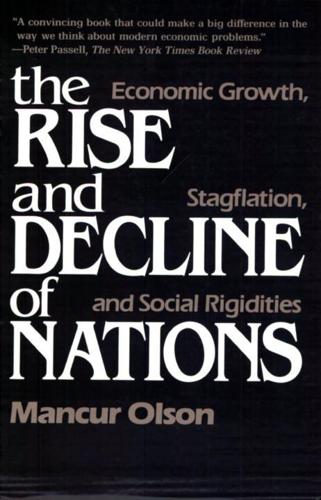
The Rise and Decline of Nations: Economic Growth, Stagflation, and Social Rigidities
by
Mancur Olson
With these inefficient prices the gains from trade were much less than before and real incomes and demands for output lower, and this, in combination with the deflation and the volatility of investment spending that Keynes emphasized, meant that the demand for labor and other factors of production fell dramatically, and by so much that rigidities in the labor market that would not have been nearly so serious by themselves had substantial quantitative effects. Even then, the unemployment problem would not have been so serious or so prolonged but for what followed. There were intense complaints in the apple-selling or flexprice markets about the disproportionate drops in prices and low returns. In addition, the laissez-faire doctrine that all would be well if the government left the economy alone (except, in some versions, for providing protection against foreign competition) was largely discredited in the minds of most Americans by the manifest failure of capitalism and the conservative administrations of Coolidge and Hoover to prevent the depression.

Hate Inc.: Why Today’s Media Makes Us Despise One Another
by
Matt Taibbi
Published 7 Oct 2019
If you weren’t watching Fox but MSNBC, which ran “horrifying” details of new DHS reports of “just plain inhumane” conduct, you’d be right back where you probably started if you belonged to their target demographic: outraged by a brutal Trump policy. In the days when we had a public interest standard that mandated companies using the public airwaves produce at least some non-sociopathic, non-commercial content, or when we had a Fairness Doctrine that required that reporters seek out credible representatives of different viewpoints, all of this back and forth would typically be weighed in one story. Part of the reporter’s job was to put aside the fault question and just describe the factual picture. The thornier the issue, the harder that job was.
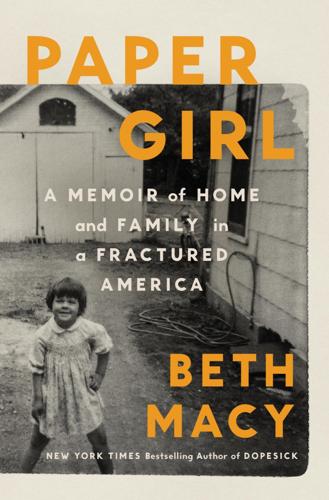
Paper Girl: A Memoir of Home and Family in a Fractured America
by
Beth Macy
Published 6 Oct 2025
I don’t remember whether Cookie ever commented on “The Moral Majority Is Neither” sticker I’d slapped on my back bumper. But it was 1986, and I’m sure the message rankled. If my sibling communications were deteriorating, America as a whole wasn’t doing much better. The Federal Communications Commission appointed by Reagan would soon end the fairness doctrine, designed to protect the integrity of public information since the 1940s. With a brushstroke, the FCC gutted the rule that said stations had to present information honestly and fairly to balance out different points of view. That gutting paved the way for the “feminazi” rantings of Rush Limbaugh and people like Pat Buchanan and Newt Gingrich, the latter of whom urged his fellow conservatives to marry politics with Jerry Falwell’s paternalistic white version of Christianity that was being gobbled up by the likes of Cookie and her Bondo-selling deacon friend.

Custodians of the Internet: Platforms, Content Moderation, and the Hidden Decisions That Shape Social Media
by
Tarleton Gillespie
Published 25 Jun 2018
This has a great deal to do with the general friendliness of U.S. policy toward the market and market actors in general,39 and because publishers and broadcasters have successfully played up the fact that they are both facilitators of speech and speakers themselves.40 As Horwitz documents, U.S. courts and the Federal Communications Commission seem to privilege providers even when they’re imposing obligations on them. The now-defunct Fairness Doctrine, which obligated broadcasters to provide air time to opposing political candidates and viewpoints, was a strong swing toward a collectivist notion of speech protection, and put a significant obligation on broadcasters. But even within this obligation, broadcasters were in practice given a great deal of freedom to determine how they met it.

System Error: Where Big Tech Went Wrong and How We Can Reboot
by
Rob Reich
,
Mehran Sahami
and
Jeremy M. Weinstein
Published 6 Sep 2021
The Digital Millennium Copyright Act has served as the primary source of guidance for copyright violation on the internet and provides significant safe-harbor provisions to give internet companies good reason to enforce its provisions. This brings democratic legitimacy to the process by which content is removed and ensures that we aren’t totally reliant on the goodwill and good judgment of CEOs. It’s time to do the same to protect democracy. Of course, it’s unrealistic to legislate for high-quality debate or a “fairness doctrine” online that would ensure equal airtime for competing views. That doesn’t even exist at our Thanksgiving dinner tables. But it is realistic to think that we can pursue some commonsense reforms. The debates about the future of CDA 230 offer an opportunity to provide stronger incentives for companies to take action on disinformation and misinformation, either by legislating new limits to the immunity of platforms or by preserving blanket immunity on the condition that the companies take more assertive action to protect democracy and report transparently on their progress.
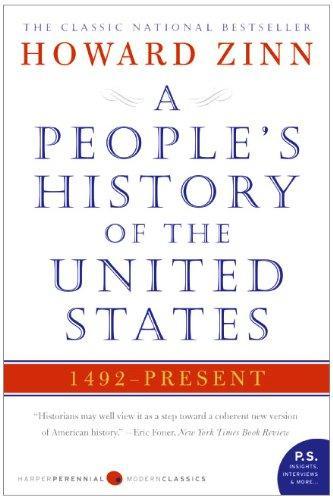
A People's History of the United States
by
Howard Zinn
Published 2 Jan 1977
On the leading political forum on public television, the nightly “MacNeil-Lehrer Report,” the public was uninvited, except as viewer of an endless parade of Congressmen, Senators, government bureaucrats, experts of various kinds. On commercial radio, the usual narrow band of consensus, excluding fundamental criticism, was especially apparent. In the mid-1980s, with Ronald Reagan as President, the “fairness doctrine” of the Federal Communications Commission, requiring air time for dissenting views, was eliminated. By the 1990s, “talk radio” had perhaps 20 million listeners, treated to daily tirades from right-wing talk-show “hosts,” with left-wing guests uninvited. A citizenry disillusioned with politics and with what pretended to be intelligent discussions of politics turned its attention (or had its attention turned) to entertainment, to gossip, to ten thousand schemes for self-help.
…
B., 23, 175, 185–86, 192, 193, 210, 328–29, 348–49, 363, 448, 686 Dukakis, Michael, 583, 611 Duke, James, 254, 262 Dunbar, Paul Laurence, 445 Dunmore, Lord, 82 Dylan, Bob, 537, 538 Earth Summit (1992), 577 Easley, Ralph, 352, 353 Eastern Europe, 591–92 East Germany, 591 Eastman, Crystal, 343 Eastman, Max, 370–71 East Timor, 567, 595, 655–56 Eaton, John, 133, 139 ecological crisis, 576 Edelman, Marian Wright, 571, 610 Edelman, Peter, 649 Edison, Thomas, 254 education, 9, 21, 111, 118, 556, 574, 651 blacks, 89, 198, 199, 202, 208, 450, 466, 467 colleges, 219, 262, 263 public schools and high schools, 263–64 women, 110, 115, 118, 123, 509 Ehrlichman, John, 543, 544 Eisenhower, Dwight, 391, 435, 439, 440, 473, 474, 475, 560, 583, 643, 661 Elders, Jocelyn, 645 election of 2000, 675–77 Elkins, Stanley, 33–34 Ellsberg, Daniel, 470, 487–88, 543, 544 El Mozote massacre, 591 El Salvador, 572, 589–91, 606–07, 608, 648 Emerson, Ralph Waldo, 146–47, 156, 186, 221 Engel, George, 271 Engerman, Stanley, 173 environmental movement, 575 Environmental Protection Agency (EPA), 576, 613 Ethiopia: Italian invasion, 409, 410, 421 Ettor, Joseph, 331, 335, 336, 337 Evans, George Henry, 222 Evans, Rowland, 498 Everett, Edward, 146, 219 Evers, Medgar, 538 Fair Employment Practices Commission, 415 Fairfax, Lord, 84 “fairness doctrine,” 564 Farmer, James, 464 Farmers Alliance, 283–94 passim farming, 84, 197, 206 Depression (1930s), 392, 397 farmers’ movements (19th century), 264, 282–95 grain, 253, 261, 283, 286, 287, 301 mechanization of, 219, 253, 283 Shays’ Rebellion, 91–95, 98 tenants and rebellions (Colonial era and 18th century), 47, 62–65, 84, 85–86, 91–95, 211, 212–14 see also cotton; land; slavery; tobacco farm workers, 614, 615 Faulkner, Harold, 350 Faulkner, William, 283–84 Federal Bureau of Investigation (FBI), 433, 434, 462, 463–64, 489, 490, 534, 544, 554–55, 556, 645–46 Federalist Papers, 96–97 Federal Reserve System, 651 Feingold, Henry, 415 feminist movements: 19th century, 117, 119–24 passim, 184–85, 202 early 20th century, 342–46, 349 1960s and 1970s, 504–14 1980s and 1990s, 616 Fine, Sidney, 400 Firestone, Shulamith, 511, 513 Firestone company, 399 Fischer, Adolph, 271 Fiske, John, 82 Fite, Emerson, 233 Fitzgerald, F.

Capitalism 4.0: The Birth of a New Economy in the Aftermath of Crisis
by
Anatole Kaletsky
Published 22 Jun 2010
Higher interest rates would, in turn, slow economic growth and make fiscal consolidation impossible, potentially creating a vicious circle and a Japanese-style debt trap for the entire world economy. Central banks and governments will try hard to avoid such a disastrous outcome. To do this, however, they will have to engage in a series of complex and elaborate policy maneuvers diametrically opposed to the noninterventionist laissez-faire doctrines of Capitalism 3.3. Their efforts would be helped if they explained clearly and frankly why reducing deficits is so important: not to avert a mythical national bankruptcy but to cope with long-term commitments on health and pensions and to preserve enough flexibility for future governments to manage demand and thereby promote economic growth.
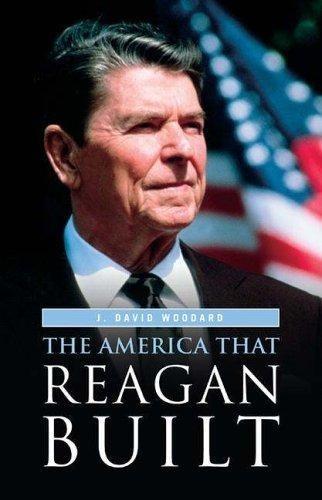
The America That Reagan Built
by
J. David Woodard
Published 15 Mar 2006
David Letterman got his start in 1982, and by 1989 Oprah Winfrey, Geraldo Rivera, Sally Jessey Raphael, Pat Sajak, Arsenio Hall, and Larry King hosted popular shows. The Reagan appointees on the Federal Communications Commission (FCC) revolutionized broadcasting when they voted to abolish the agency’s long-standing fairness doctrine, which required broadcasters to provide a balanced presentation of public A Rising Tide 75 issues. With FM radio stations given over to rock and country music, older, more conservative listeners turned to AM radio, where right-wing hosts like Rush Limbaugh, Pat Buchanan, and G. Gordon Liddy entertained them with criticisms of women, liberals, Democrats, and environmentalists.33 In the burgeoning suburbs, kids collected and traded Garbage Pail Kids, and had to have as many Cabbage Patch Kids as possible.
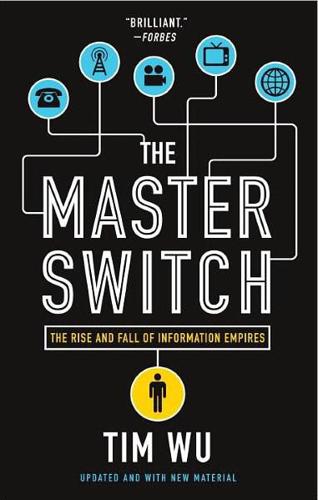
The Master Switch: The Rise and Fall of Information Empires
by
Tim Wu
Published 2 Nov 2010
Ultimately, the question of what motivated Congress to pass any law is difficult to answer. 23. The distinction between general public service stations and propaganda stations is described in McChesney, Telecommunications, Mass Media, and Democracy, 27. 24. From the FRC Third Annual Report, as quoted in Steven J. Simmons, The Fairness Doctrine and the Media (Berkeley: University of California Press, 1978), 32. See also Robert S. McMahon, Federal Regulation of the Radio and Television Broadcast Industry in the United States 1927–1959 (New York: Arno Press, 1979), 59–60. 25. More information about the General Orders can be found in McChesney, Telecommunications, Mass Media, and Democracy, 24–26. 26.

Like, Comment, Subscribe: Inside YouTube's Chaotic Rise to World Domination
by
Mark Bergen
Published 5 Sep 2022
Once he got to college, he started to appear in British tabloids as the face of a new men’s rights movement, wearing a leather jacket and a light scowl, a proud virgin steering clear of women to avoid false charges of rape. * * * • • • Before YouTube, the last big moment in unregulated media had ushered in a legion of raucous, chattering talkers—a colossal force of firebrand politics that arose and grew largely in response to women’s progress. It started with Rush. In 1987 the FCC revoked the Fairness Doctrine, a rule requiring broadcasters to air both sides of a controversial issue. The following year Rush Limbaugh, a failed disc jockey, debuted a new AM radio talk show. Limbaugh brought the shock jock DJ sensibility to politics, creating an entire brand of media drenched in sexism (“feminazis” and such) and delivered to a conservative audience that felt neglected by the mainstream press.
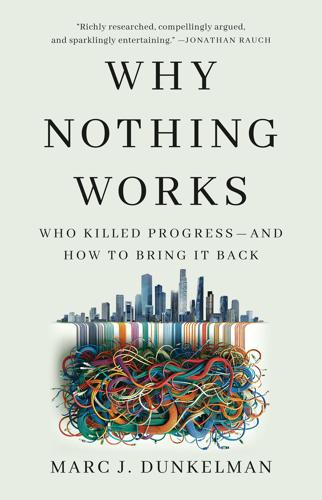
Why Nothing Works: Who Killed Progress--And How to Bring It Back
by
Marc J Dunkelman
Published 17 Feb 2025
One of the crucial initial steps on the journey that expanded standing came at the unlikely behest of the judge that Richard Nixon would eventually appoint as the nation’s chief justice. In 1969, while serving on the DC Circuit Court of Appeals, Warren Burger wrote an opinion on a case that turned on whether the Federal Communications Commission had erred in renewing the broadcasting license of Mississippi’s WLBT.31 The Fairness Doctrine, established by the FCC, required public broadcasters to provide the public with an understanding of both sides on any major topic of public discourse. WLBT had consistently painted the civil rights movement in the worst possible light, often failing to inform viewers of the protestors’ grievances.
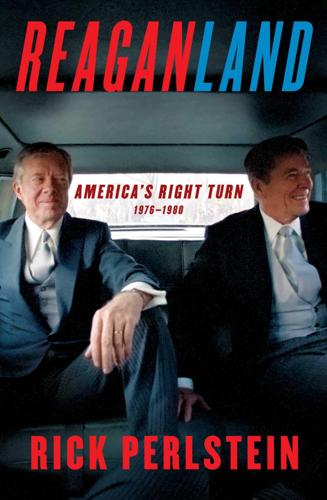
Reaganland: America's Right Turn 1976-1980
by
Rick Perlstein
Published 17 Aug 2020
The Sunday after Presidents’ Day, Robison recorded a sermon describing the gay rights movement as a “perversion of the highest order,” citing a National Enquirer article that claimed gays were systematically recruiting little boys and (here he cited “police sources” as his authority) murdering them. He also asserted that God had passed His judgment on Harvey Milk by seeing to his assassination. The Dallas Gay Political Caucus asked WFAA to invoke the fairness doctrine, a stipulation of the Federal Communications Act that mandated that holders of federal broadcast licenses provide equal time to balance controversial expressions on issues of public importance. The group insisted that it would not have made the request had Robison limited his rant to biblical teachings that homosexuality was religiously proscribed: that was not political.
…
Robison also retained one of the most effective and flamboyant lawyers in the country, Richard “Racehorse” Haynes, to appeal his FCC case. Haynes said Robison’s was a moral statement, not a political one. (The Bible said wife-swapping was a sin, after all. “No one claimed that would merit wife-swappers as a class to have equal time under the fairness doctrine.”) It also happened that Robison had a TV special in the can, The End of Outrage… A Call to Arms! It was booked for broadcast on more than seventy stations around the country starting the second week in April, heralded by full-page ads. (“World War II to Jonestown—40 Years of Hell” was the headline for a collage of combat imagery, antiwar protesters, and children’s dead bodies splayed on the ground in Guyana: “Concerned Americans, and especially Christians, must see this frank program that confronts us with shocking reminders of the disintegrating society we live in and in which James Robison calls all of us to turn back before it’s too late from National Self-Destruction.”)
…
The meeting began with a prayer asking Christ to bestow wisdom and strength upon “this Christian fellowship to enable us to come to grips with the great issues of our time.” Rabbi Marc Tanenbaum joked to his colleagues at the American Jewish Committee that he wasn’t too offended. “In keeping with the ‘fairness doctrine’… the President asked me to offer the closing prayer,” which he did—starting in Hebrew. The men referred to one another by first names. Most had been friends for years from ecumenical gatherings: the Catholic cardinal from New York City, the head of the National Council of Churches, the patriarch of the Greek Orthodox Church, a Methodist bishop, a leading black Baptist, the outgoing Southern Baptist Convention president.

Global Spin: The Corporate Assault on Environmentalism
by
Sharon Beder
Published 1 Jan 1997
Various conservative media-watch organizations were set up for this purpose, such as Accuracy in Media (AIM), founded to “expose liberal bias in the media”, and the Media Institute, which included executives from major corporations such as Procter & Gamble and Mobil Oil on its national advisory board.4 Perhaps the most significant development, however, was the rise of the conservative talk show. Since the early 1980s the number of talk radio stations in the US has quadrupled to over 800. The abolition of the ‘fairness doctrine’ in 1987, which “required broadcasters to present fair coverage of opposing views on major public issues”, helped in the evolution of the more strident, right-wing stations.5 “Talk radio has become a potent conservative marketing tool,” says Howard Kurtz, author of Hot Air, a book on talk shows.6 An example of their use to defeat a bill occurred at the end of 1994.
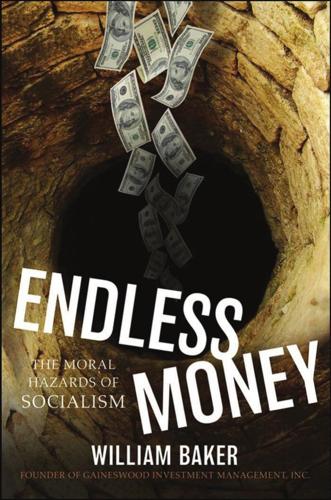
Endless Money: The Moral Hazards of Socialism
by
William Baker
and
Addison Wiggin
Published 2 Nov 2009
Or, those such as the British, even the Archbishop of Canterbury, who would accommodate Sharia law? Would we not then soon see the dhimmi, the cutting off of hands, the stoning of homosexuals and adulterers? Would not the Canadian courts imprison Mark Steyn for being critical of Islamic fundamentalism? Should the United States adopt the fairness doctrine, would not conservative thinkers such as he have their right to freely speak political thoughts be regulated? Is America’s sense of fairness not distorted by the relativism of its second most wealthy individual, who taunts us by saying he bears a lower tax rate than the cleaning lady who works the night shift at his office, leading him to conclude taxes should be raised for the highest bracket of the middle class, 85 percent of whose wealth is confiscated by the time of death?
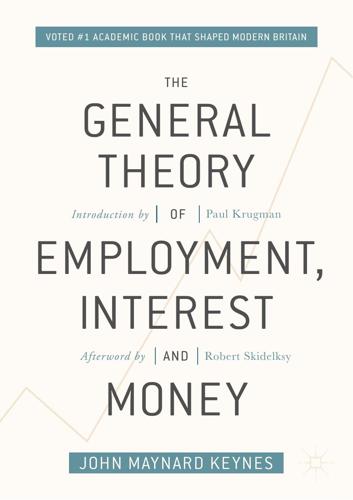
The-General-Theory-of-Employment-Interest-and-Money
by
John Maynard Keynes
Published 13 Jul 2018
Keynes of the precious metals than is fair and reasonable, but also that an immoderate policy may lead to a senseless international competition for a favourable balance which injures all alike.4 And finally, a policy of trade restrictions is a treacherous instrument even for the attainment of its ostensible object, since private interest, administrative incompetence and the intrinsic difficulty of the task may divert it into producing results directly opposite to those intended. Thus, the weight of my criticism is directed against the inadequacy of the theoretical foundations of the laissez-faire doctrine upon which I was brought up and which for many years I taught;—against the notion that the rate of interest and the volume of investment are self-adjusting at the optimum level, so that preoccupation with the balance of trade is a waste of time. For we, the faculty of economists, prove to have been guilty of presumptuous error in treating as a puerile obsession what for centuries has been a prime object of practical statecraft.

Consumed: How Markets Corrupt Children, Infantilize Adults, and Swallow Citizens Whole
by
Benjamin R. Barber
Published 1 Jan 2007
It enthuses about consumers as the new citizens who can do more with their dollars and euros and yen than they ever did with their votes. It associates the privileged market sector with liberty as private choice while it condemns democratic government as coercive. It promotes a new and malevolent variation on the eighteenth-century laissez-faire doctrine of the “invisible hand” by which Enlightenment economists once postulated that the pursuit of private desire by selfish individuals would result in the greater good of all. Privatization ideology today encourages us to believe that the market is not only efficient and flexible but can somehow turn its regressive impulses to the service of what is left of the idea of the public good.

Evil Geniuses: The Unmaking of America: A Recent History
by
Kurt Andersen
Published 14 Sep 2020
The group kept the Senate from even voting on the bill, despite the Democrats’ fifty-seven-seat majority. Starting in the 1980s as well, the right’s project expanded beyond the Wall Street Journal editorial pages to genuinely mass media. The Reagan administration did away with the federal Fairness Doctrine, which had been in place since the early broadcast era to prevent radio and TV news programs from having distinct ideological or partisan tilts. With fairness and balance no longer required, Rush Limbaugh led the way, making talk radio practically synonymous with right-wing prosleytizing. Rupert Murdoch had started buying U.S. newspapers and magazines in the 1970s, including the New York Post, which he turned overnight from politically liberal to right-wing.
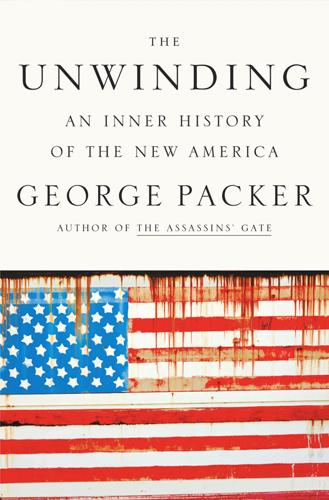
The Unwinding: An Inner History of the New America
by
George Packer
Published 4 Mar 2014
Basically, he was “the ultimate Generation X slacker,” Breitbart later wrote, “not particularly political, and, in retrospect, a default liberal. I thought that going to four movies a week, knowing the network television grid, and spending hours at Tower Records were my American birthright.” In 1987—the year that the Federal Communications Commission voted 4–0 to repeal its own Fairness Doctrine, which had been in effect since 1949 and required licensees of the public airwaves to present important issues in an honest and equitable manner (a vote that paved the way the following year for a Sacramento radio host named Rush Limbaugh to syndicate his conservative talk show nationally)—Breitbart entered Tulane.

Unfinished Empire: The Global Expansion of Britain
by
John Darwin
Published 12 Feb 2013
A straw in the wind was an outburst by Thomas Carlyle, the sage (and scourge) of early and mid Victorian Britain. In characteristically violent language, Carlyle denounced what he saw as the moral abdication implicit in conventional humanitarian attitudes, utilitarian thinking and the laissez-faire doctrines of the ‘political economists’. The target he chose, designed to create maximum offence, was the abolition of slavery. Its result, he declared, had been to ruin the British West Indies and to leave the freed slaves to fester in idleness. Carlyle’s explicit assertion that blacks should be made to work under whites, and his resort to the crude epithets of a pro-slavery agitator, provoked general outrage.10 Carlyle’s polemic did not mark the sudden arrival of a new racist mood in British opinion (as some excitable commentators have suggested), and his friends, including John Stuart Mill, were appalled by his language.
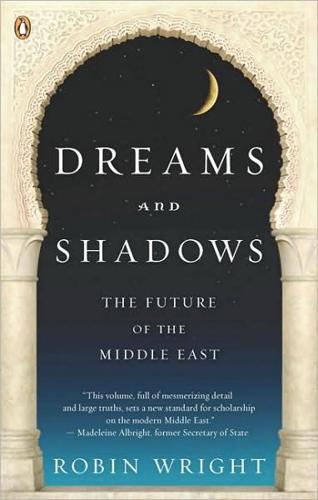
Dreams and Shadows: The Future of the Middle East
by
Robin Wright
Published 28 Feb 2008
But ten years into the revolution, the two men had a final and politically fatal falling-out when Montazeri dared to criticize the Islamic republic and its rulers. The theocracy, he said publicly, had failed to fulfill much of its early promise. He called on the government to “correct past mistakes.” “One does not fight a doctrine by killing, because no problem can be settled this way. One fights back with a fair doctrine,” he wrote the warden of Tehran’s Evin Prison after word circulated about several secret executions of dissidents.7 In an open letter to the Imam, he then plaintively appealed, “For what valid reasons…has our judiciary approved these executions, which can result in nothing but damaging the face of our revolution and the system?”
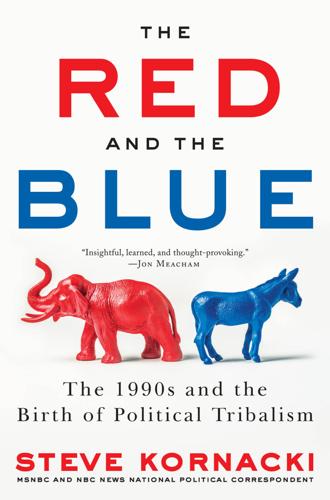
The Red and the Blue: The 1990s and the Birth of Political Tribalism
by
Steve Kornacki
Published 1 Oct 2018
Working under the name Jeff Christie, he’d started as a disc jockey in Pittsburgh, returning in failure to his native Missouri, where he linked up with the Kansas City Royals’ public relations office. Then it was off to Sacramento and one more shot behind the microphone, this time on the talk side. It was here that his conservative on-air persona took shape, and in the summer of 1988—months after the repeal of the Fairness Doctrine—ABC offered Limbaugh the chance to go national. Soon, hundreds of stations signed up to broadcast his daily taunts of “feminazis,” “environmental whackos,” and all other creatures of the left. He branched out, too, with a tome, The Way Things Ought to Be, that spent fifty-four weeks on the New York Times bestseller list.

Never Let a Serious Crisis Go to Waste: How Neoliberalism Survived the Financial Meltdown
by
Philip Mirowski
Published 24 Jun 2013
While brave activists had proven willing to invent new forms of civil disobedience, much of their tweeting and blogging tended to reveal a reversion to themes already promulgated by the usual suspects covered in this volume. When not openly appealing to a lost world, like the “Take Back the American Dream” motif, they would propose “reforms” dating back to the 1980s, such as the Tobin tax on financial transactions, or a “fairness doctrine” for political ads, or an ineffectual public financing scheme for election campaigns. Mostly in the heat of Occupy, disputations over the crisis and financial sector were dominated by backward-looking ambitions and nostalgia for a happier and more prosperous time. Slogans like “We are the 99%” seemed to be calculated so as to be overly inclusive, confusing expansiveness with democracy, and therefore ineffectual.
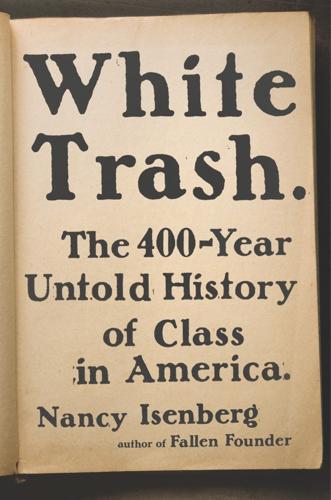
White Trash: The 400-Year Untold History of Class in America
by
Nancy Isenberg
Published 20 Jun 2016
Regulation, regional planning, and readjustment (the last a favorite New Deal term) were needed to correct market abuses, control the exploitation of natural resources, and adjust class imbalance, and to do so, in President Roosevelt’s phrase, “not to destroy individualism but to protect it.” Wilson, Wallace, and Corbin all agreed that the old laissez-faire doctrines could no longer be sustained, and that the frontier thesis—which presumed that western migration had alleviated poverty—no longer worked. For Wilson, the “great disorganizing force of the depression” was “a great, magic dark hand.” Unlike Adam Smith’s invisible hand of the free market, Wilson’s dark hand represented the dangers of an unregulated economy: downward mobility and the ruin of countless lives.26 If for poor rural tenants and sharecroppers class was an inescapable cage or a prison, it was equally a source of what Henry Wallace labeled “human erosion.”
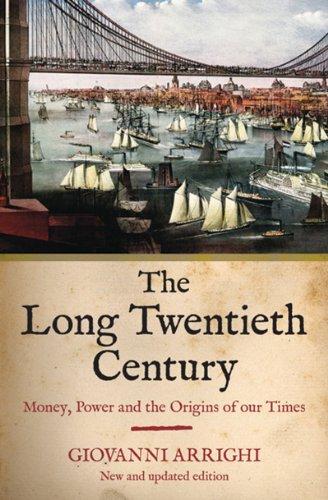
The Long Twentieth Century: Money, Power, and the Origins of Our Times
by
Giovanni Arrighi
Published 15 Mar 2010
Whereas under Reagan the assistance of Japanese capital for the power pursuits of the US government was sought through EPILOGUE 365 borrowing and the alienation of US assets and future incomes, under Bush it was sought through outright donations (true “protection payments”) as during and after the Gulf War. At the same time, no longer content with Japanese “voluntary” restrictions on exports to the United States — and in glaring contradiction of the free trade, laissez faire doctrine it preached to the rest of the world — the Bush administration began to press the Japanese government to promote administratively a reduction of its trade surplus with the United States. And yet, even under the US-friendly LDP regime, Japan found fewer and fewer reasons to comply with US commands.

Free Speech: Ten Principles for a Connected World
by
Timothy Garton Ash
Published 23 May 2016
To defend their right to invade and expose the private lives of anyone whose goings-on might possibly interest the public, and hence help them to sell more papers, they wrapped themselves in the garments of Milton and Mill, denouncing ‘a mortal threat to the British people’s historic right to know’ and ‘the end of more than 300 years of press freedom’.26 In fact, many countries with robust traditions of free expression have also had, and continue to have, external regulation of their media. Even in the United States, with its First Amendment forbidding Congress to make any law abridging the freedom of the press, the Federal Communications Commission (FCC) for decades enforced a Fairness Doctrine on radio and television. This required each broadcaster to provide coverage of ‘controversial issues of public importance’ and ‘to present opposing viewpoints as a condition of retaining its license’. It was abolished in 1987, under the deregulatory free market administration of Ronald Reagan.
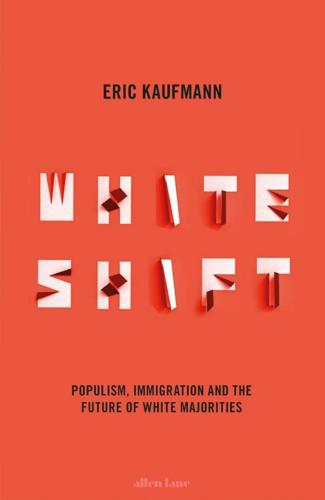
Whiteshift: Populism, Immigration and the Future of White Majorities
by
Eric Kaufmann
Published 24 Oct 2018
One of the liberalizing forces in American life after 1960 had been the expanding New York and Hollywood-based television media, with content produced by a media elite which leaned in a culturally liberal direction.98 However, by the 1990s, cable television began to chip away at the primacy of ABC, NBC and CBS, the so-called ‘big three’ television networks. Market segmentation into speciality channels fragmented the media landscape.99 In addition, in 1987, the Federal Communications Commission (FCC) stopped enforcing the ‘fairness doctrine’, which opened the door to conservative talk radio. In 1996, new laws enabled radio stations to become nationally syndicated. So began the erosion of one of the institutional cornerstones of the country’s post-1960s attitude liberalization. The growth of right-wing cable television, and, later, internet sites, induced a polarizing shift in American political culture.
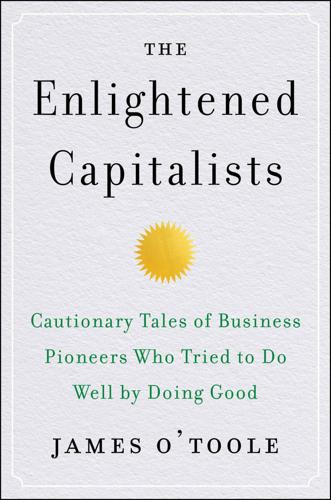
The Enlightened Capitalists
by
James O'Toole
Published 29 Dec 2018
Throughout his life he constantly called for lower taxes on income and wealth, reasoning that there was nothing morally wrong with becoming rich or inheriting great wealth. He even wrote an amusing article, “Dough Boy,” about how hard it was to be born with a silver spoon in one’s mouth! He also called for the end of unnecessary bureaucratic controls on business, while rejecting the laissez-faire doctrine that government should impose no regulations in the marketplace. In particular, he opposed the social Darwinist version of that philosophy elucidated by Herbert Spencer in Britain and William Graham Sumner in America, which, he wrote, “gave authority for competition as ruthless and impersonal as that waged by weeds and wild beasts.
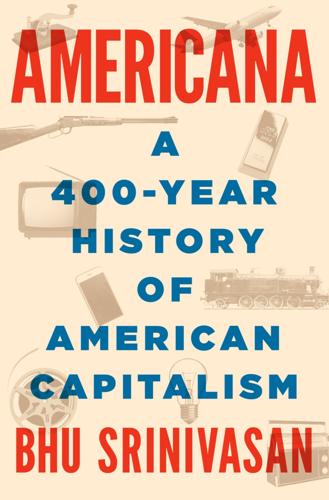
Americana: A 400-Year History of American Capitalism
by
Bhu Srinivasan
Published 25 Sep 2017
In the space of six months, two of America’s most powerful industries ran into the coinciding agendas of a socialist author and a Republican president, resulting in sweeping legislation. Roosevelt’s transformative presidency did much to defuse the antagonisms among capital, labor, and consumers that had festered and grown over the previous decades. American capitalism, if there had been any doubt, by now had fully diverged from the laissez-faire doctrine. To Americans, market forces alone had not been enough to guarantee clean meat or safe drugs. Capitalism’s future was contingent upon the democratic ability to correct for excesses, with regulatory oversight being the price of consent of the governed. And as this balance became refined in the unfolding century, the American’s stake in capitalism as a consumer would grow to become as important as his citizenship in its democracy.

Americana
by
Bhu Srinivasan
In the space of six months, two of America’s most powerful industries ran into the coinciding agendas of a socialist author and a Republican president, resulting in sweeping legislation. Roosevelt’s transformative presidency did much to defuse the antagonisms among capital, labor, and consumers that had festered and grown over the previous decades. American capitalism, if there had been any doubt, by now had fully diverged from the laissez-faire doctrine. To Americans, market forces alone had not been enough to guarantee clean meat or safe drugs. Capitalism’s future was contingent upon the democratic ability to correct for excesses, with regulatory oversight being the price of consent of the governed. And as this balance became refined in the unfolding century, the American’s stake in capitalism as a consumer would grow to become as important as his citizenship in its democracy.

Capital in the Twenty-First Century
by
Thomas Piketty
Published 10 Mar 2014
See IMF (International Monetary Fund) Internet bubble, 172 Investments: inequality of, 430–432, 452–455; wealth rankings and, 432–443; university endowments and, 447–452; alternative, 449–450, 454, 456; petroleum and, 455–460, 462; sovereign wealth funds and, 455–460 Iraq, 537–538 Italy: growth rate of, 174, 445; savings in, 177–178, 185; public wealth in, 184–185; wealth tax in, 528–529, 533 Ivanishvili, Bidzina, 625n22 James, Henry, fiction of, 152, 414 Jantt, Markus, 631n28 Japan: national income and, 63–64, 66, 68; growth in, 86, 93, 95, 174–176, 588n10; savings in, 177–178; foreign assets in, 192–194; capital/income ratio in, 195; inequality in, 322, 445; taxation and, 490, 498, 637n31 Japanese bubble, 172, 597n30 Jeanne, Olivier, 645n41 Jefferson, Thomas, 158, 363 Jobs, Steve, 440–441 Joint stock companies, 203 Jones, Alice Hanson, 159, 347 Jones, Charles I., 586n35 Judet de la Combe, P., 644n30 Judicial conservatism, 566, 653n49 Justification of inequality, 264 Kaldor, Nicholas, 231, 601n36, 634n1, 638n35 Kaplan, Steven N., 607n41 Katz, Lawrence, 306, 314–315, 608n12, 640n53 Kennickell, Arthur, 347 Kesztenbaum, Lionel, 612n4 Keynes, John Maynard, 135, 220, 231–232, 600n22, 652n44 King, Gregory, 56, 180, 590n1, 637n28 King, Willford, 348, 506, 613n13 Knowledge and skill diffusion, 21, 71, 313 Kopczuk, Wojciech, 607n38 Kotlikoff-Summers thesis, 428, 622n63 Krueger, Alan, 313, 608n10 Krugman, Paul, 294 Kubrick, Stanley, 620n40 Kuczynski, Jürgen, 219–220, 599n20 Kumhof, Michael, 606n32 Kuwait, 537 Kuznets, Simon, 11–17, 20, 23, 580nn9,11,14, 581nn15–16, 582n36, 603n4 Kuznets Curve, 13–15, 237, 274, 336, 580n14 Labor. See Capital-labor split Labor, income from, 18, 21, 53. See also Inequality of labor income Labrousse, Ernest, 582n34, 600n28 Lagardère, Arnaud, 445 Laissez faire doctrine, 136 Lamont, Michèle, 417–418, 621n49 Lampman, Robert, 18, 582n27 Land: price of, 5–6, 151; rate of return on, 53–54, 613n16; accounting and, 56; values, capital/income ratio and, 196–198, 596n33 Land, as capital, 47, 644n31; in Britain and France, 114, 117–119, 122–123; in Germany, 141; in America, 150–151, 155; rural vs. urban, 197–198 Landais, Camille, 605n20, 626n34, 634n4 Landier, Augustin, 639n47 Landowners, Ricardo and, 5–6 Latin America, 62–63, 195, 491 Laval, Pierre, 285 Lavoisier, Antoine, 56 Law of cumulative growth, 74–77 Law of cumulative returns, 75, 77 Laws of capitalism: first fundamental, 52–55; second fundamental, 55, 166–170 Lebeaupin, A., 605n20 Le Bras, Hervé, 587n5, 589n20 Lefranc, Arnaud, 631n26 Le mouvement du profit en France au 19e siècle (Bouvier, Furet, and Gillet), 575, 576, 582n34, 600n27 Leroy-Beaulieu, Paul, 30, 417, 503–504, 506, 636nn20,21,22, 637n28 Le Van, L., 591n18 Levasseur, Pierre Emile, 617n10 Liberalization, economic, 98–99, 138–139, 492 “Life-cycle theory of wealth,” 384, 391–392, 428 Life expectancy, inheritance and, 385–390, 400 Limited liability corporations, 203 Linder, Peter, 343 Lindert, P., 603n26, 628n3 Liquidity, 472, 548, 551 Lonmin, Inc., 39–40, 570 L’Oréal, 440, 624n15 Lower class, 250–251 Low growth.
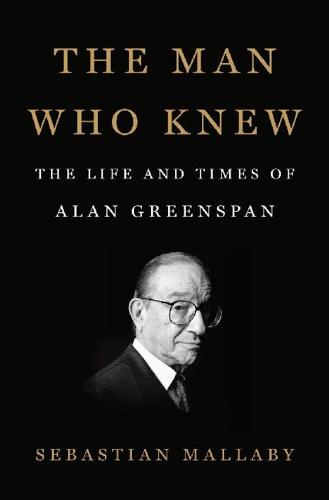
The Man Who Knew: The Life and Times of Alan Greenspan
by
Sebastian Mallaby
Published 10 Oct 2016
But it shared Senator Proxmire’s suspicion that he was not to be trusted with it. “Greenspan’s stern policy prescriptions have earned him a reputation as an insensitive Neanderthal,” the magazine reported, adding that “many in Congress still doubt the wisdom of installing a CEA chairman who seems committed to the laissez-faire doctrines of a century ago.”57 A long essay accompanying the profile argued that Greenspan’s supposed enthusiasm for austerity was especially risky in a time of recession. “Do Gerald Ford and his advisers know what they’re doing?” Newsweek demanded. Unemployment had reached its highest point since 1941, but the inflation-obsessed hawks around the president were set against a real stimulus.

Great North Road
by
Peter F. Hamilton
Published 26 Sep 2012
And when Nerys had gone into labor, a search and rescue helicopter had flown through the snow to airlift her to the Institute—she had a baby boy. So there was a loose form of organization and community cooperation rather than direct government riding to the rescue, but then Bartram and Brinkelle had always practiced a somewhat laissez-faire doctrine when it came to their domain. Saul was quite surprised she and her family hadn’t abandoned them altogether. It would have been easy enough for them all to fly back to Highcastle and through the gateway. But for whatever reason Brinkelle had remained. He suspected it was to maintain absolute control over the Institute, to which her branch of the family had devoted themselves.

From Peoples into Nations
by
John Connelly
Published 11 Nov 2019
From the mid-1880s, one splinter identified Jews as enemies of the “people”—people understood as co-ethnics but also as the working people. Fascism emerged from liberalism and from liberalism’s agnosticism on the national question. But it also arose from failures in liberal economic policies and the laissez-faire doctrine that constrained state welfare policies. In the end, the strongest source of inspiration for fascism was simply liberals’ neglect. Two generations earlier, liberal nationalism had sprouted in Eastern Europe out of the sense among patriot intellectuals that their peoples were victims of condescension by other ethnicities, above all Germans.

Nixonland: The Rise of a President and the Fracturing of America
by
Rick Perlstein
Published 1 Jan 2008
Richard Nixon had forgotten his own lesson of his 1968 victory: the political power of quiet. He was right: Americans were tired of shouters. But now Nixon and Agnew were shouting loudest of all. It came out in that election-eve broadcast. The Republicans bought a half hour on all the networks. Then DNC chair Larry O’Brien challenged the purchase under the FCC’s fairness doctrine, asking the networks to split the time in half. They acceded (rejecting the other request of the Democrats, who were $9 million in debt, to make the airtime free; the $100,000 to pay for the time was raised by Averell Harriman)—a Solomonic result that forced the Republicans to hack a carefully crafted half-hour speech in half.